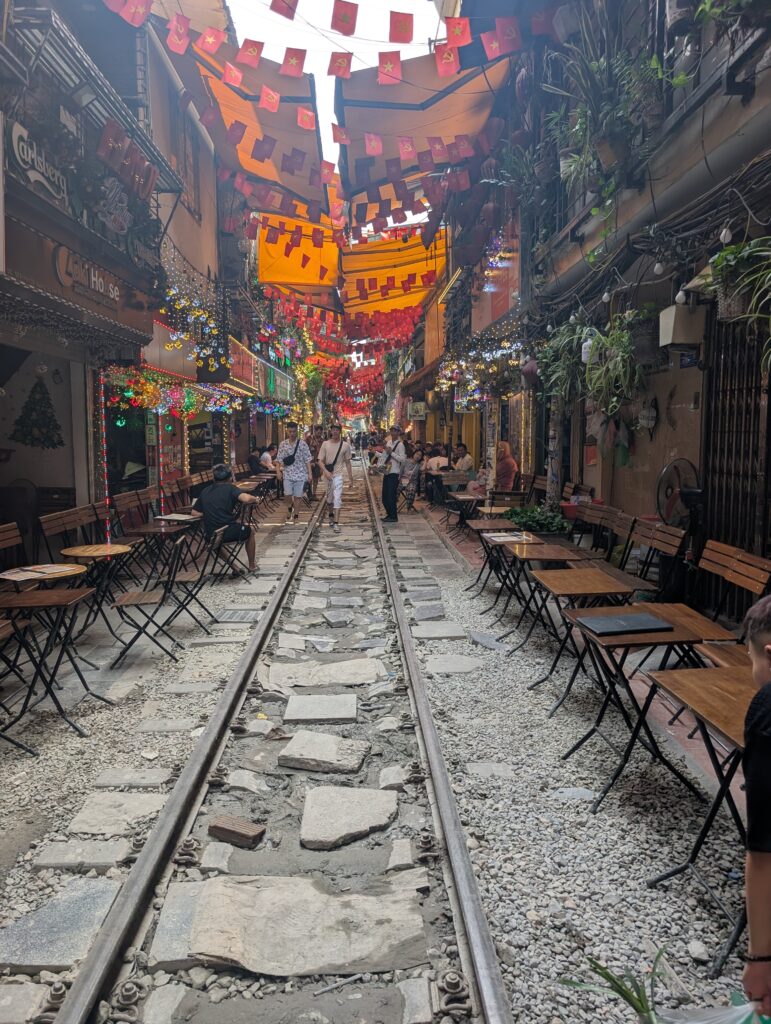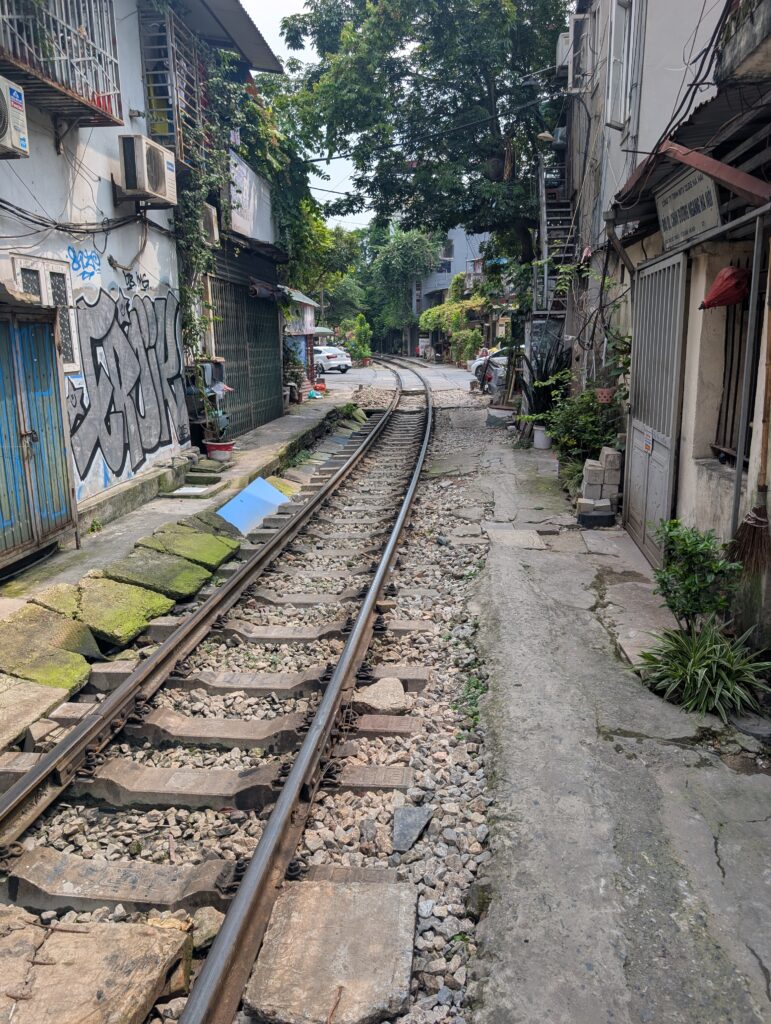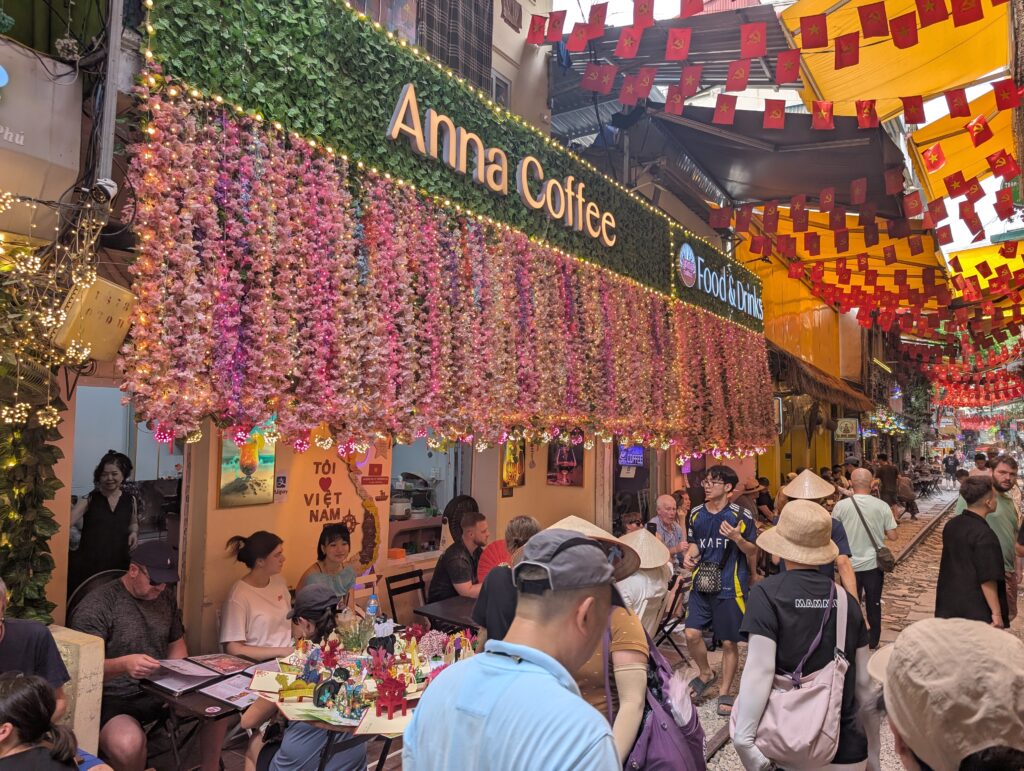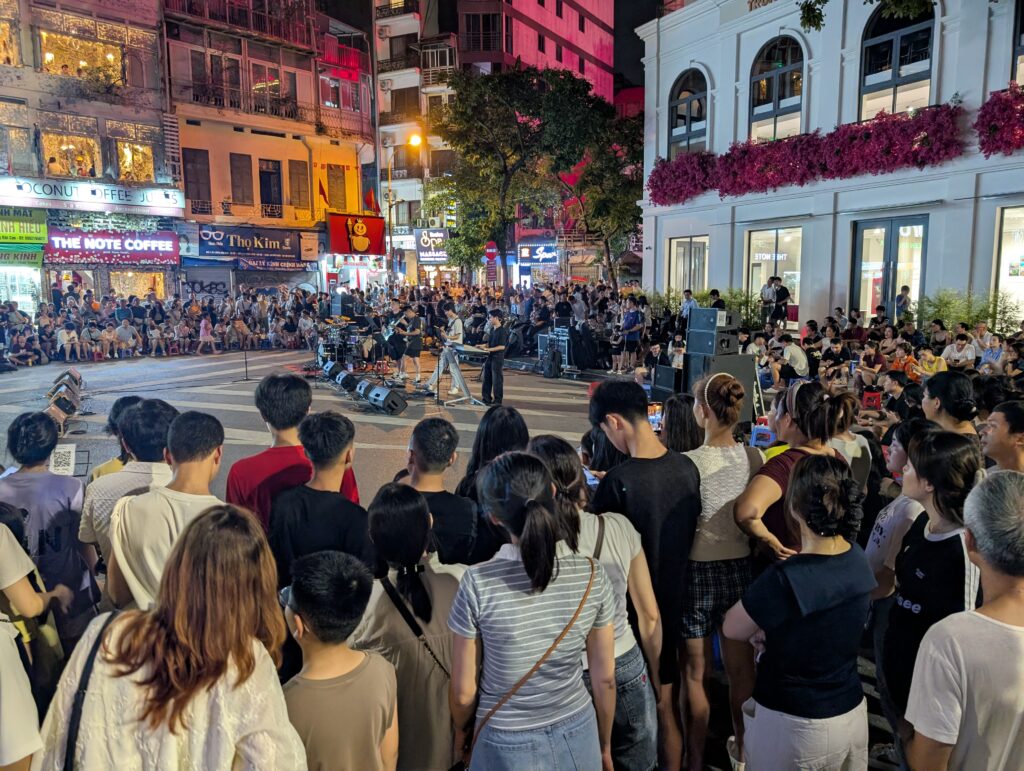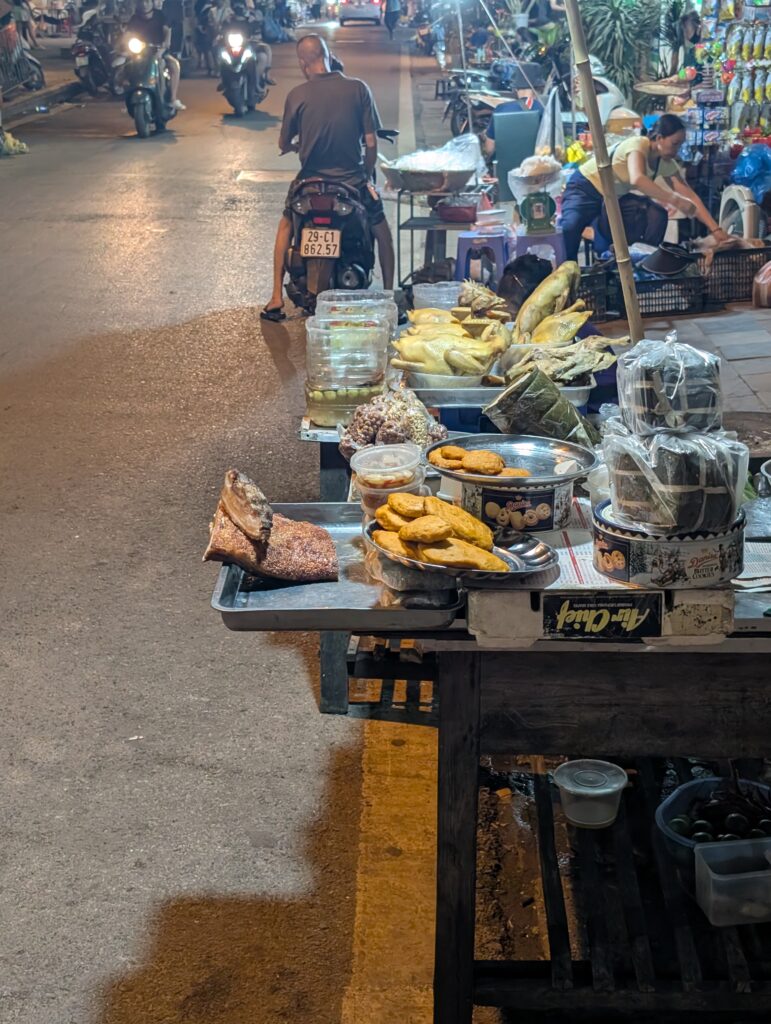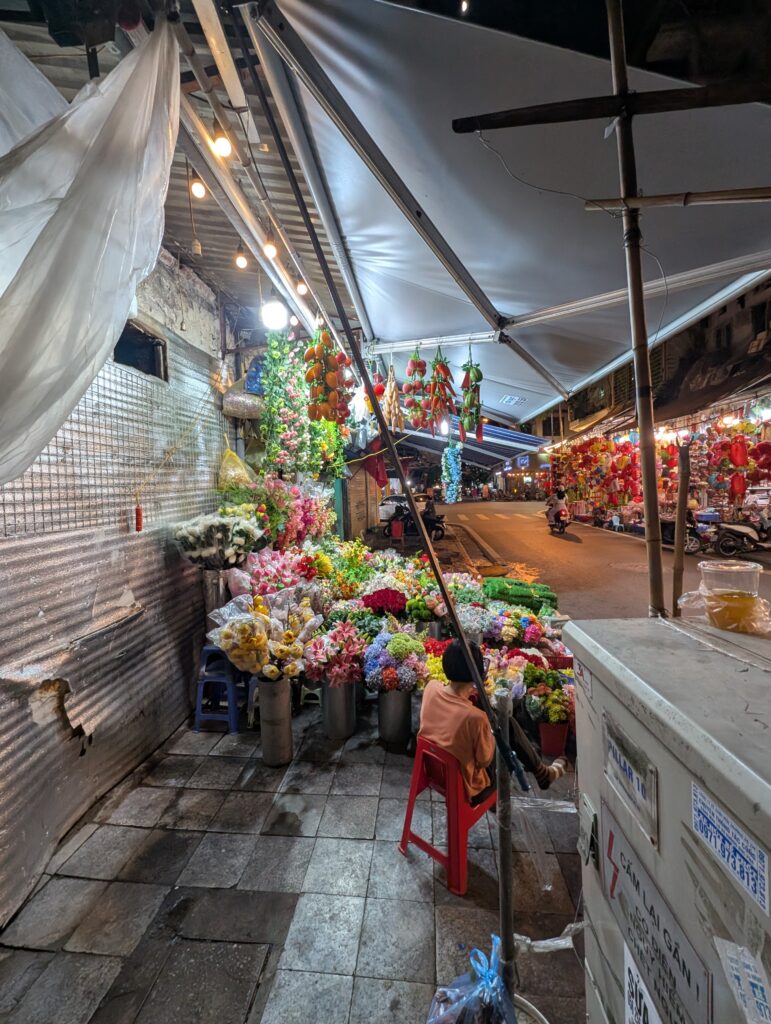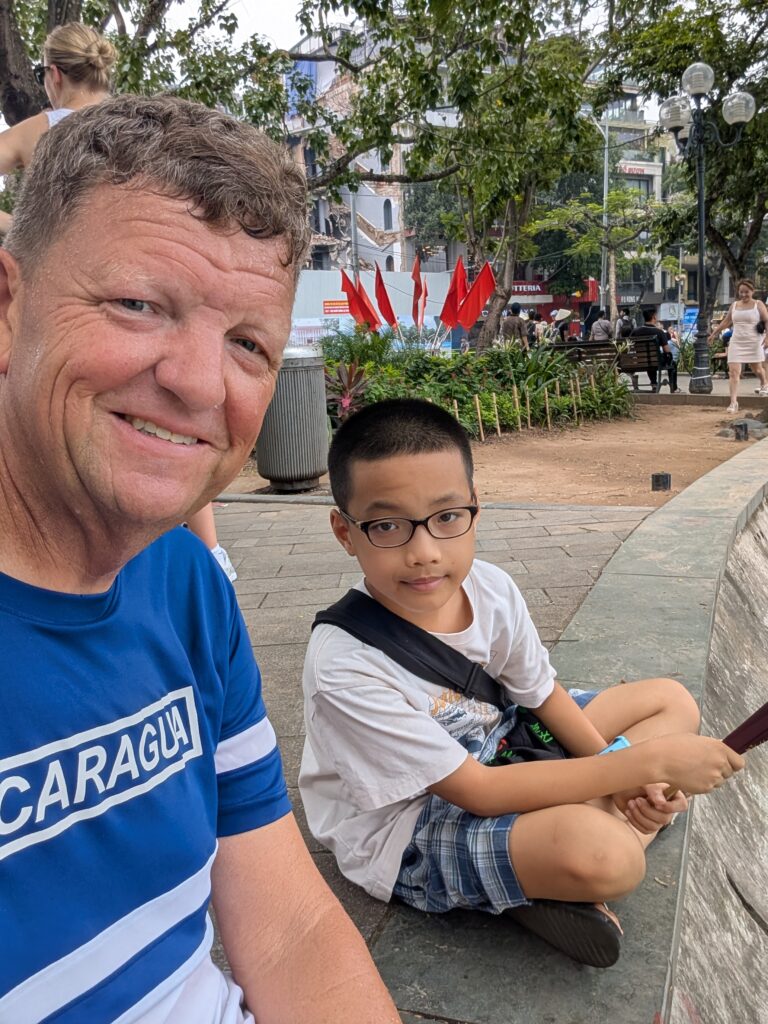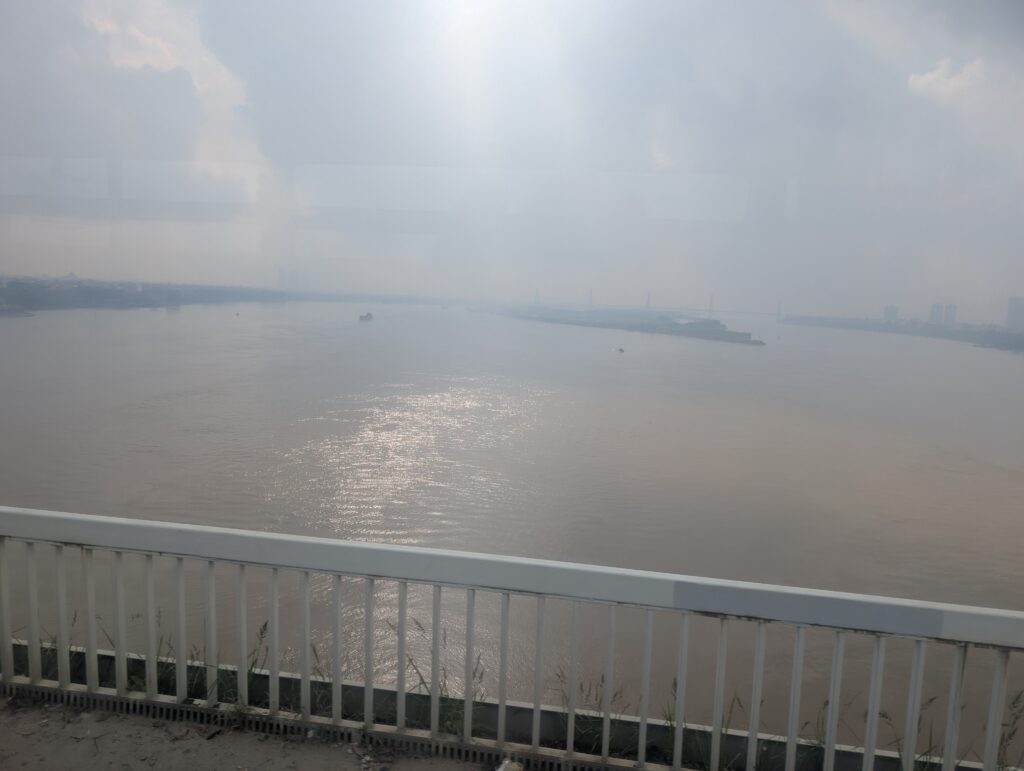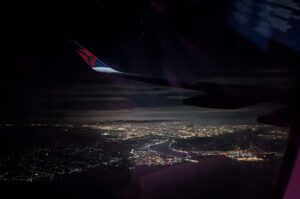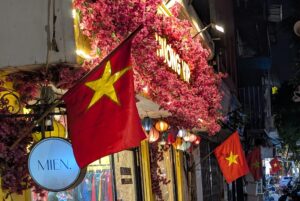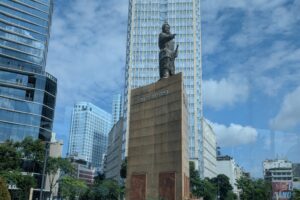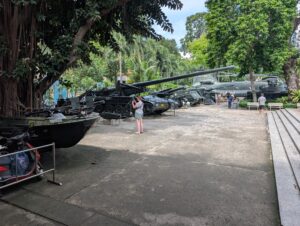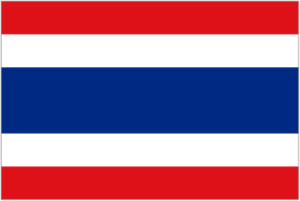Hanoi
Communist Capital
I arrived in Hanoi early on the afternoon of July 1st. I noticed right away that the air quality seemed just as bad as it had been in Beijing. Both are huge cities. About 22 million people live in Beijing, and 8 ½ million in Hanoi. Hanoi does not have the modern transportation infrastructure available in major Chinese cities, however. I took a slow bus through heavy traffic to a location on the outside edge of Old Town Hanoi. I still had to fend off aggressive rickshaw drivers to walk to my motel about a mile distant from the bus stop.
I was at first somewhat disappointed with my room. I had reserved an actual motel room in Hanoi, since there were quite a few in the range of $10-$15 per night. I felt it was worth the small difference in price to have some privacy over staying in a hostel. The problem was that, like often happens when reserving rooms online in India, the pictures in the advertisement did not really reflect the quality of the room. It was clean, though, and I didn’t feel like looking for something else that night. I initially thought I’d go find something better the next day. In the end, though, the kindness of the staff won me over. It was a clean, comfortable, inexpensive room, even if it was not nearly as nice as the pictures made it seem. The owner and staff were nice enough to make up the difference, and a bird in the hand is often better than two in the bush.
I went out for supper that evening and ate at one of the many eateries lining the streets of Old Town Hanoi. Nearly all of them have seating that spills out onto the sidewalks, right up to the edge of the street. The sidewalks are cluttered with tiny plastic tables and chairs. The sidewalks are not useful for walking in just about any Southeast Asian city. They are perpetually clogged with motorcycles, store merchandise, tables, signage, rickshaws, and who knows what else. It is hard to imagine, too, how all of these tiny restaurants stay in business. They seem busy enough, but there are so many. I had good food at most of them, but they charged so little it was difficult to imagine the had enough profit margin to stay afloat. I ate a tasty meal, balled up at one of the tiny tables out on the sidewalk. The locals and Vietnamese tourists must have thought I looked like a grasshopper with my legs folded and my knees pointing skyward. I just chuckled at myself and enjoyed my meal.
The next morning, I set out to fill my tourist punch card. I passed Hanoi’s Train Street on the way to the Ho Chi Minh Mausoleum. Since summer is the low season, tourists were not being allowed to enter. The interior was closed for about a two month window. As with Mao’s mausoleum in Beijing, it is generally believed that the “body” of Ho Chi Minh on display here is made of wax. I didn’t really want to see the corpse anyhow, so I contented myself with observing the architecture and the changing of the guard ceremony that took place right outside the front of this formidable structure. There is a large park just outside, and other government buildings in the distance. I observed military security details all around the middle of town, with special concentrations near this politically important place.
I was impressed by the number of tour groups from Spain. Throughout Vietnam and all of Southeast Asia and even over in Sri Lanka, I encountered more organized tours and groups of tourists from Spain than any other country. This was also beneficial to me especially in Hanoi, as I could understand enough Spanish to overhear and learn a few things form the Spanish groups’ tour guides.
From the mausoleum, I walked to the nearby One Pillar Pagoda. It has a different name in Vietnamese of course. Amazingly, this pagoda was built in the early to mid 11th century. There are several different legendary explanations behind the building of the pagoda, though none of them seemed particularly convincing. It is clear, though, that from a long way off, the structure roughly resembles a lotus flower rising up from a pond. The pagoda itself rises up out of a pond full of lotuses. The design feels appropriate and intentional. It is interesting and different, and doesn’t really take all that long to see.
(Continued)
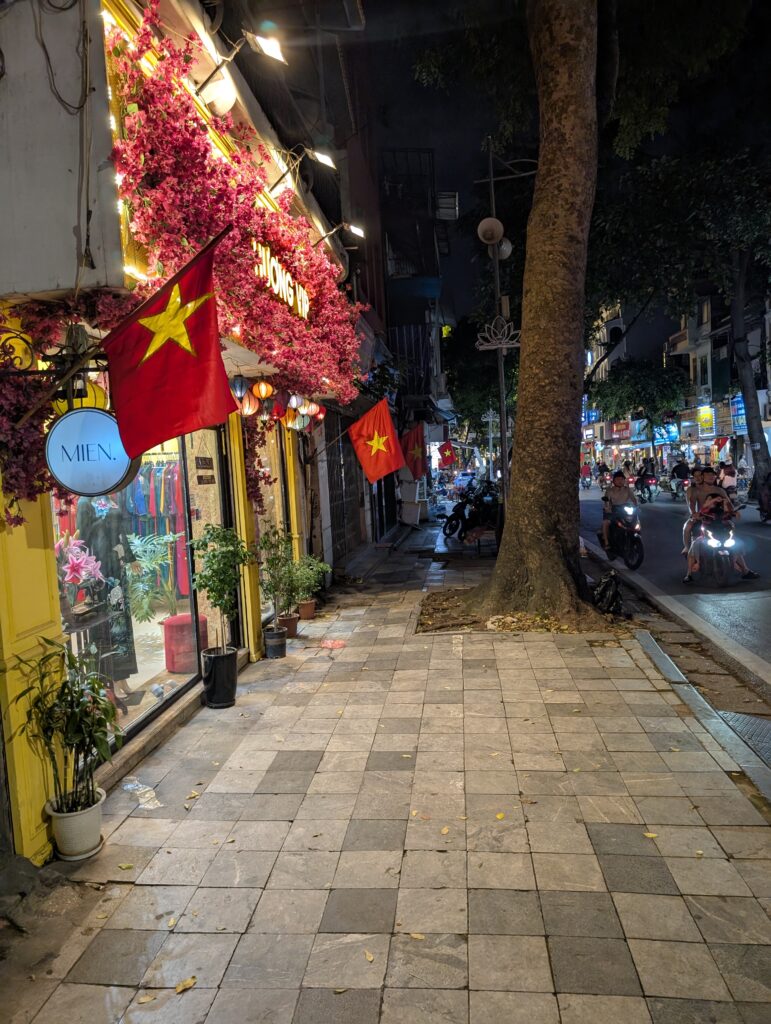
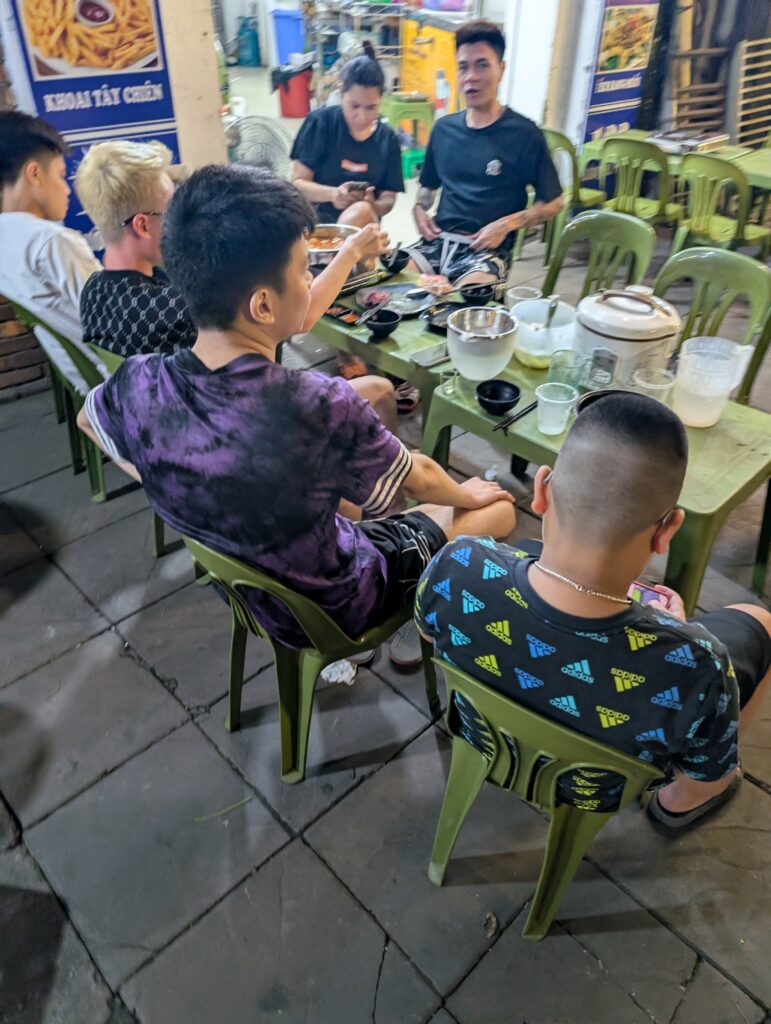
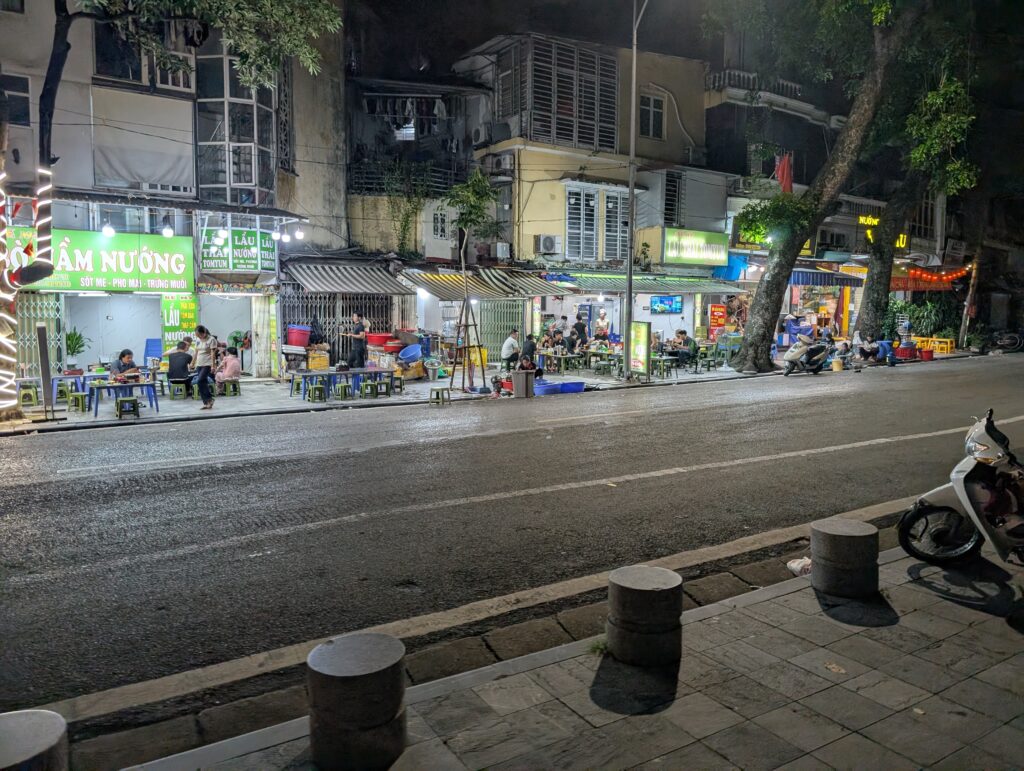
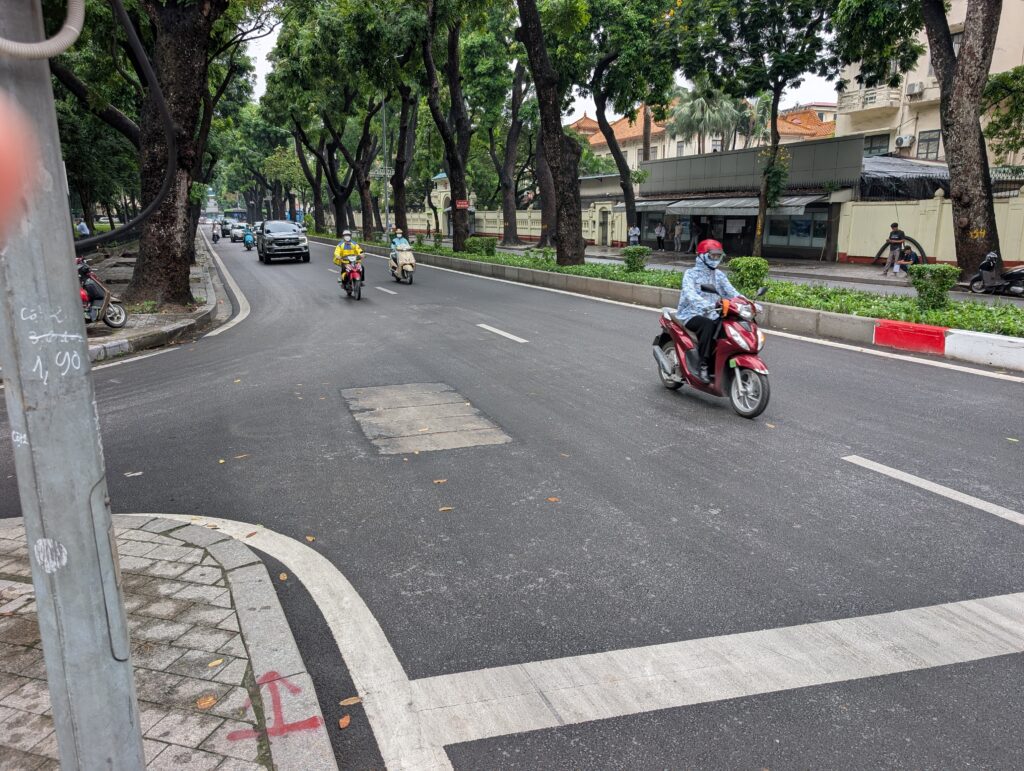
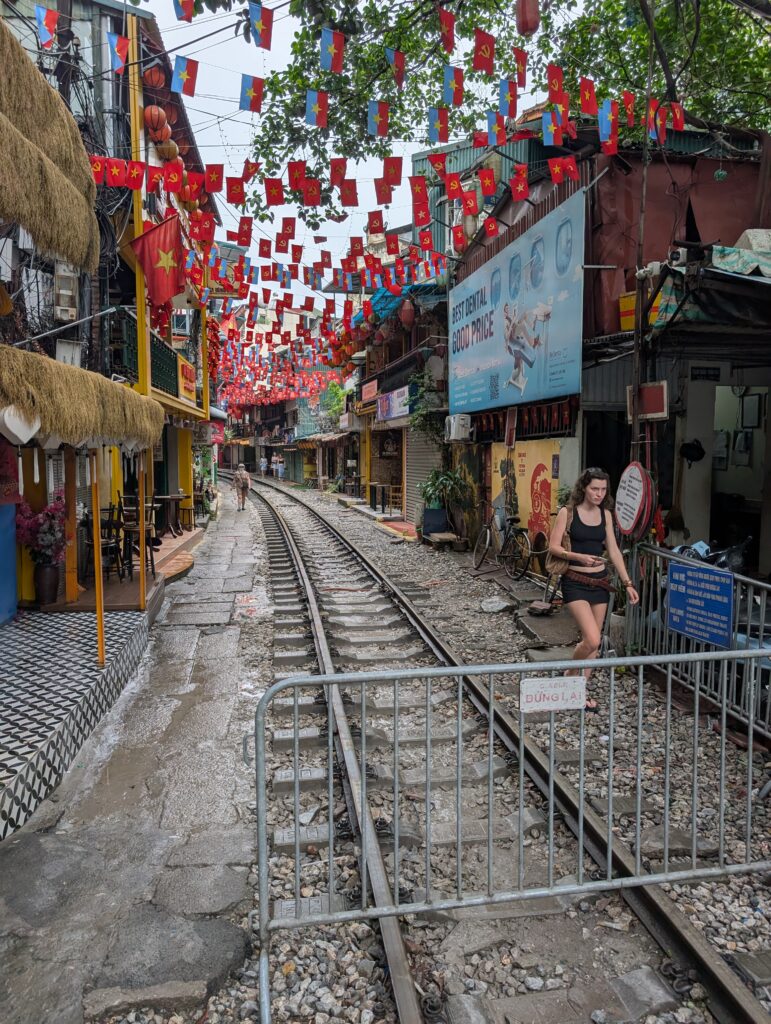
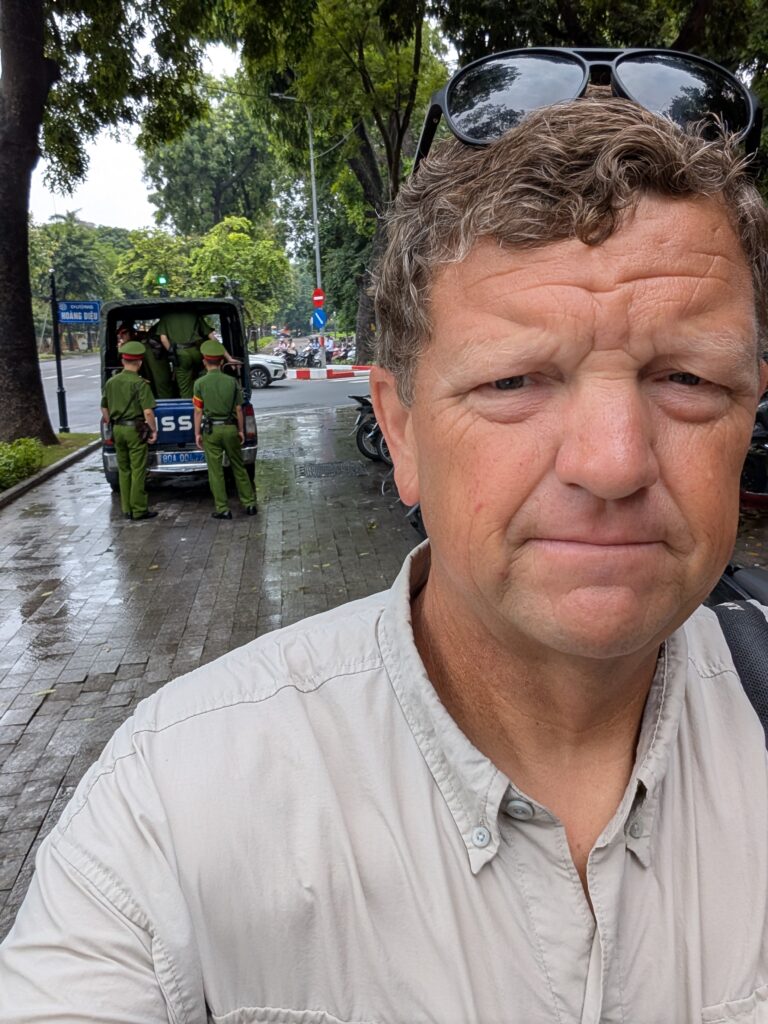
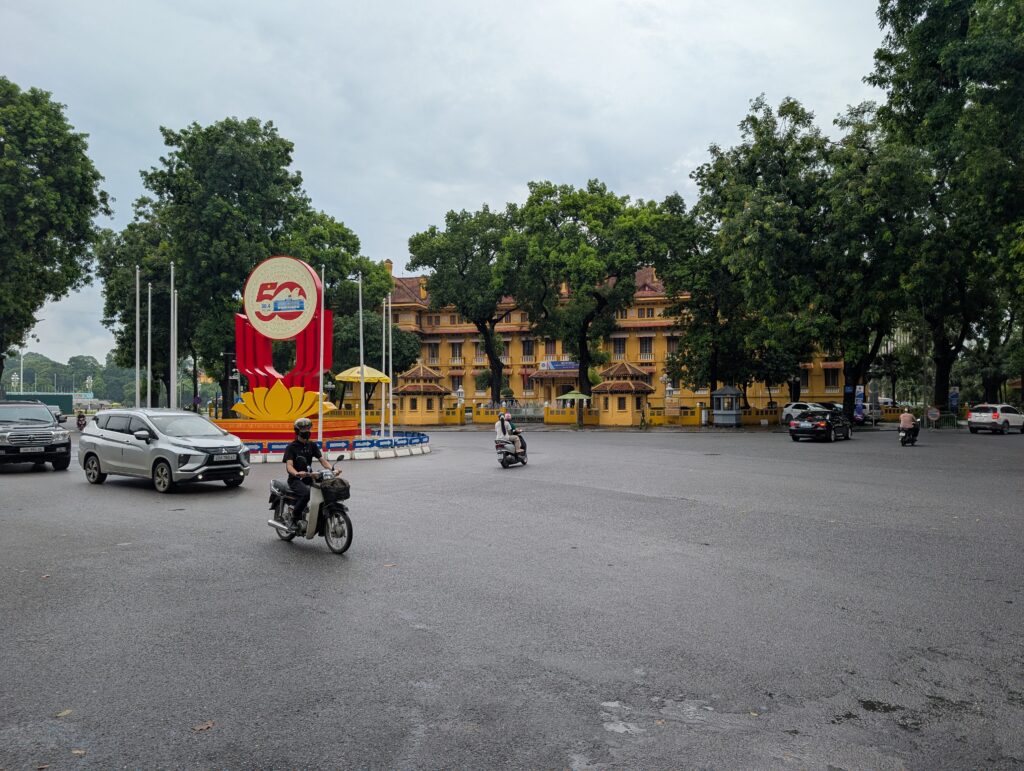
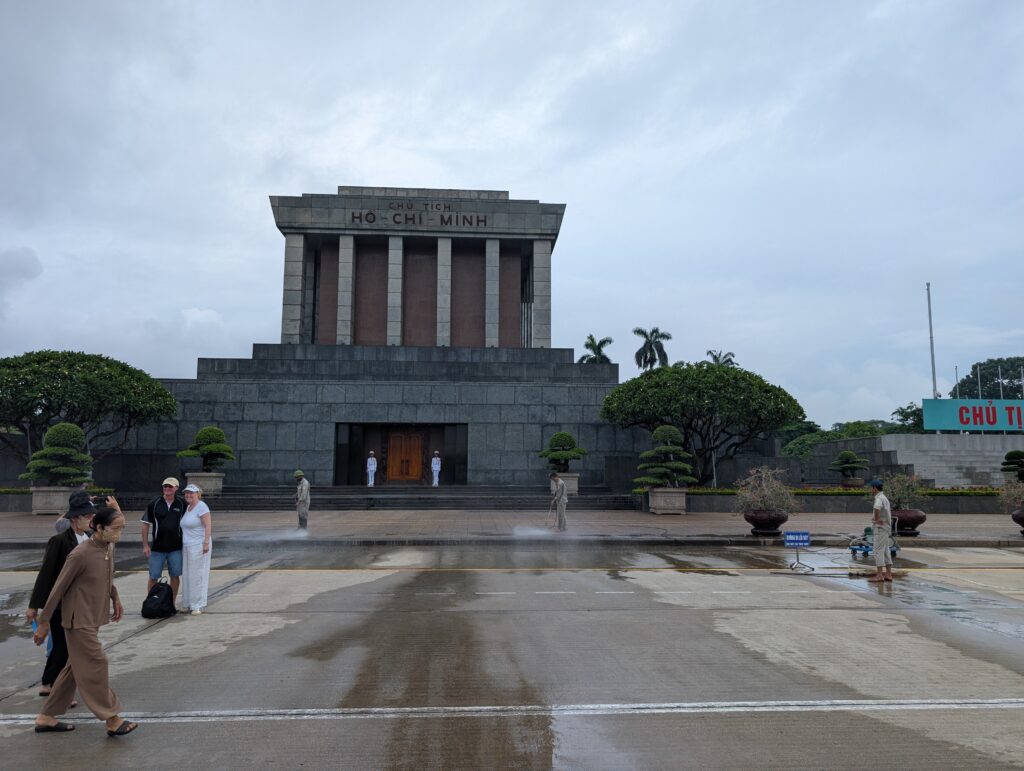
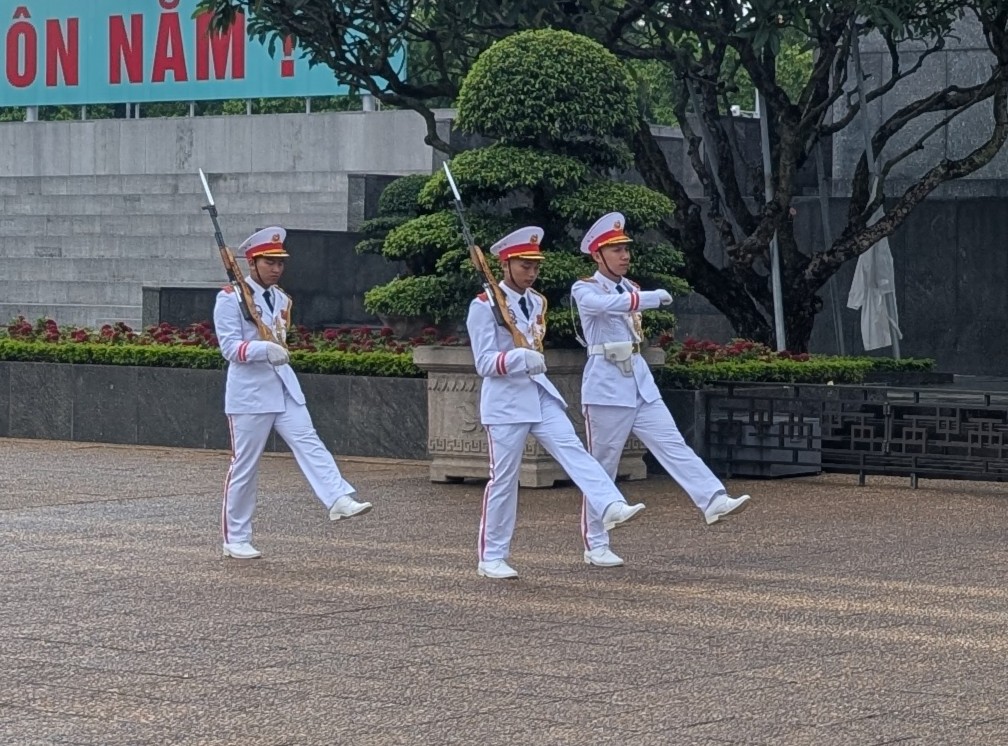
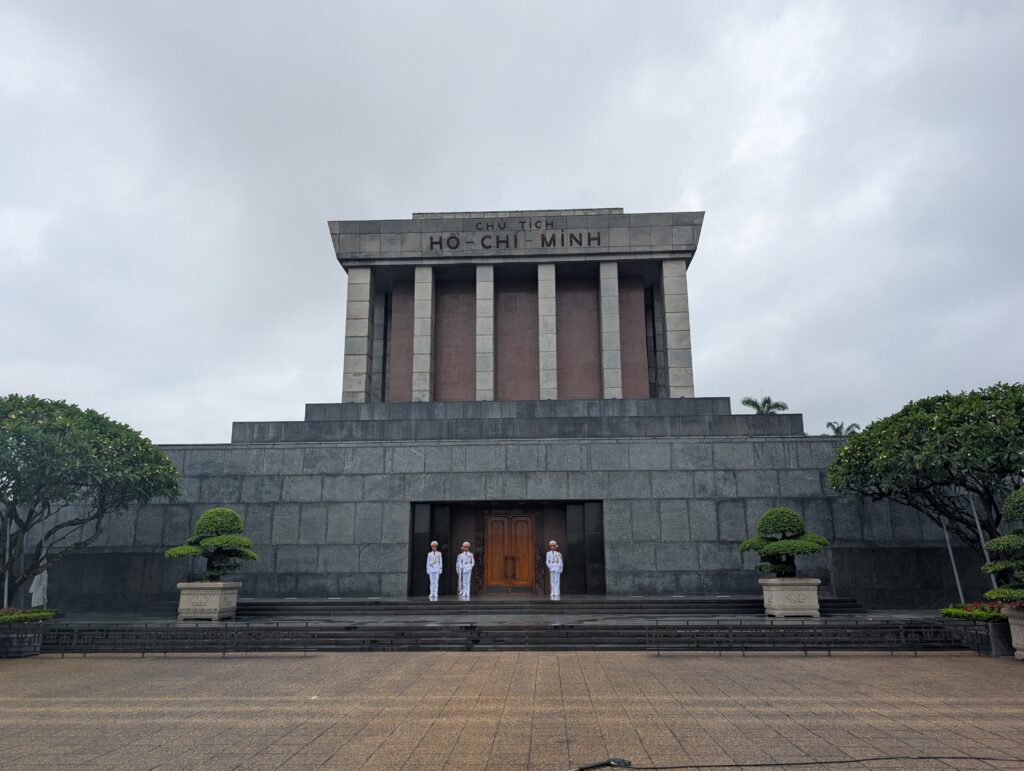
After the pagoda, I walked to the Imperial Citadel of Thang Long. One of the names for the citadel is almost identical to the term used to describe the Forbidden City in Beijing. It was indeed a royal residence during the periods when Vietnam existed independently from China. During the Tang and Song periods, Vietnam was controlled as a sort of protectorate of China and they established a position here. A royal residence was built here by a Vietnamese ruler in the early 11th century. Some of the currently existing structures were built by Nguyen leaders in the early 19th century. Others were destroyed by the French and restored more recently. Enough impressive 19th century buildings remain to make it interesting, and the museum adds historical interpretation of earlier periods. It was a pleasant place to visit. I learned some about Vietnamese history and artistic evolution.
It was mid afternoon by the time I had finished visiting all of those places. I had been pretty woolly for a couple of weeks and was in desperate need of a hair cut. I found a place that offered those services without anything additional – which is apparently a thing, at least at some barber shops in Saigon. It was a little bit difficult to convey instructions to the barber. I figured he knew best what to do, and I just left it to him. I think he at least understood that much. It wasn’t the best haircut I have ever had, but it didn’t cost more than about $2, so I cannot really complain. I went back out after a short rest in the afternoon for a delicious meal. I strolled around town in the comfortable evening air. The St. Joseph’s Cathedral is probably more beautiful at night. I had not planned specifically to see it in the evening, but it worked out nicely that way. St. Joseph’s was built by the French rulers of Indochina in the mid 1880s. It is a popular spot for photos, and tourists were still congregating there in the late evening. The church is still an operating Catholic parish, with crowds often spilling into the streets during the Sunday evening mass. It was not always so. The communist government of Vietnam has often persecuted Catholics in that country, arresting priests and shutting down worship for decades at a time. It seems that at least for now, the Vietnamese government has made its peace with religion.
Another popular stop in the Hanoi Old Quarter is Hoan Kiem Lake. This is another site that looks a little better at night. The lights of the city on the far side were pleasant, in the evening haze. The lake used to be called “green water lake” in Vietnamese for obvious reasons. It is a kind of stagnant fresh water lake. I noticed later when walking or running around the lake that there are not one but two temples in the lake. A small bridge leads out to Ngoc Son Temple, which was bult in the early 19th century and dedicated to three ancient sages. A smaller “turtle temple” is located on a smaller, inaccessible island closer to the middle of the lake. I used the wide path around the lake’s shore to run most of the mornings I was in Hanoi. It’s a small lake, covering about 30 acres. Three laps around was just short of a 5k.
(Continued)
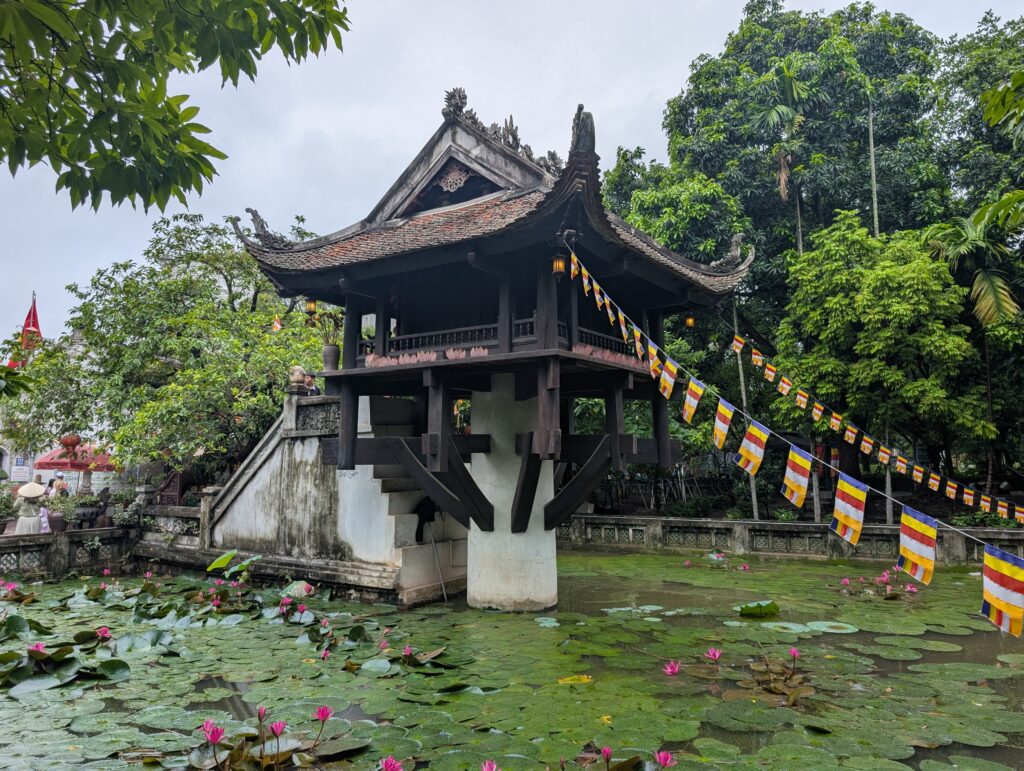
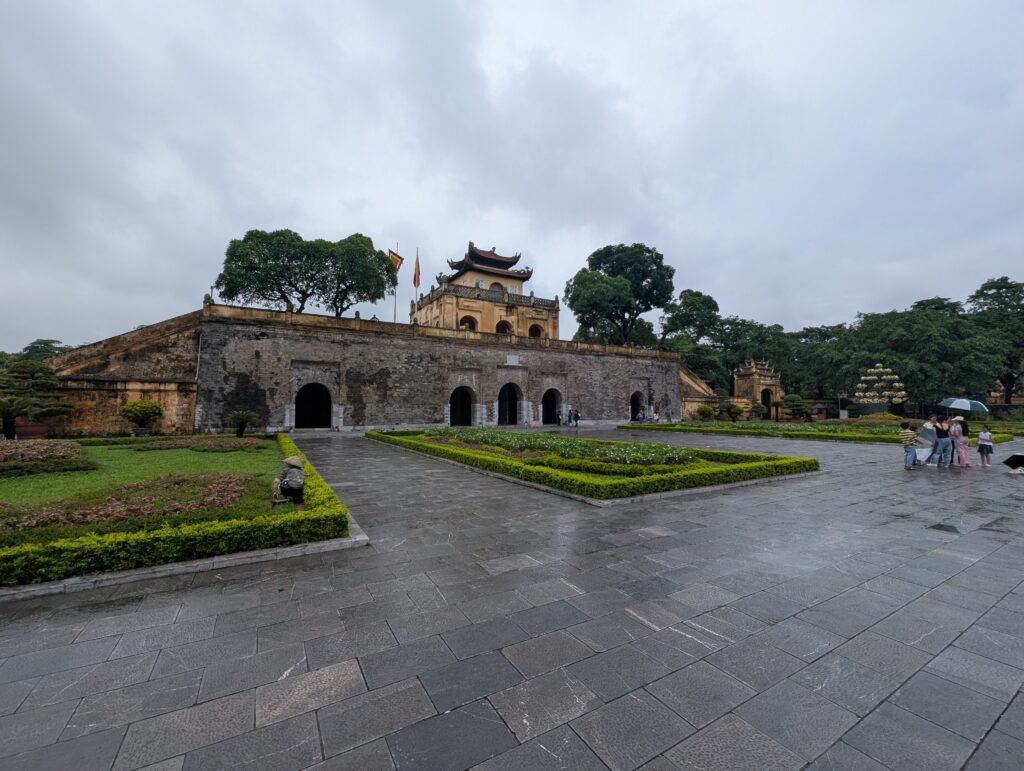
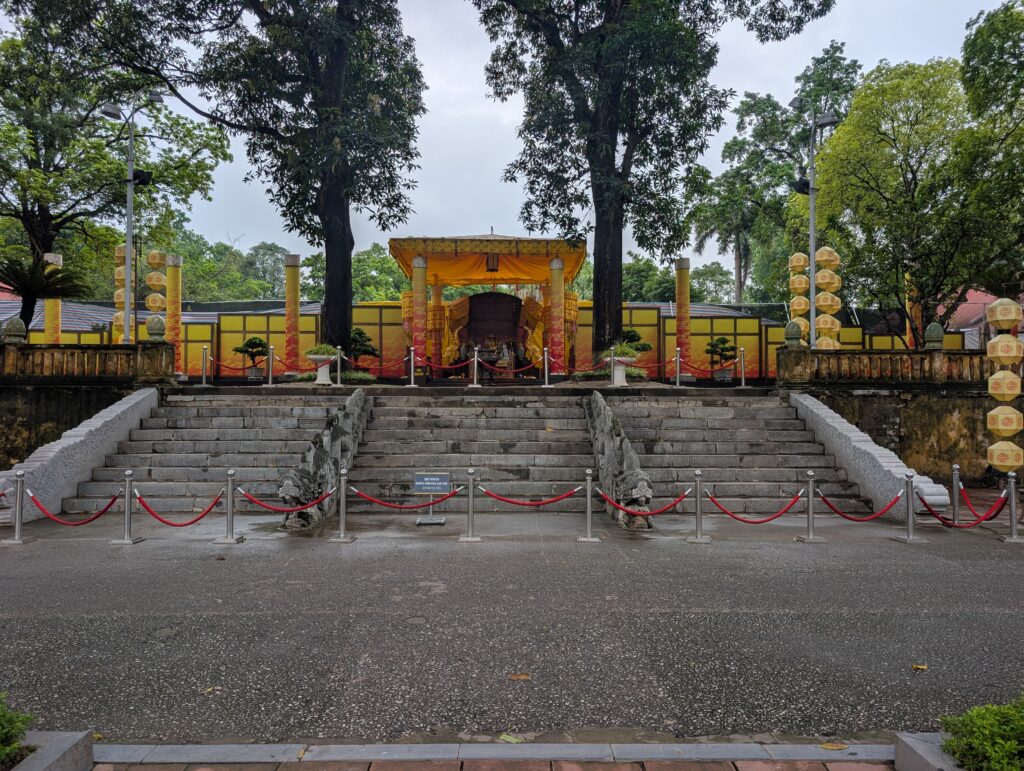
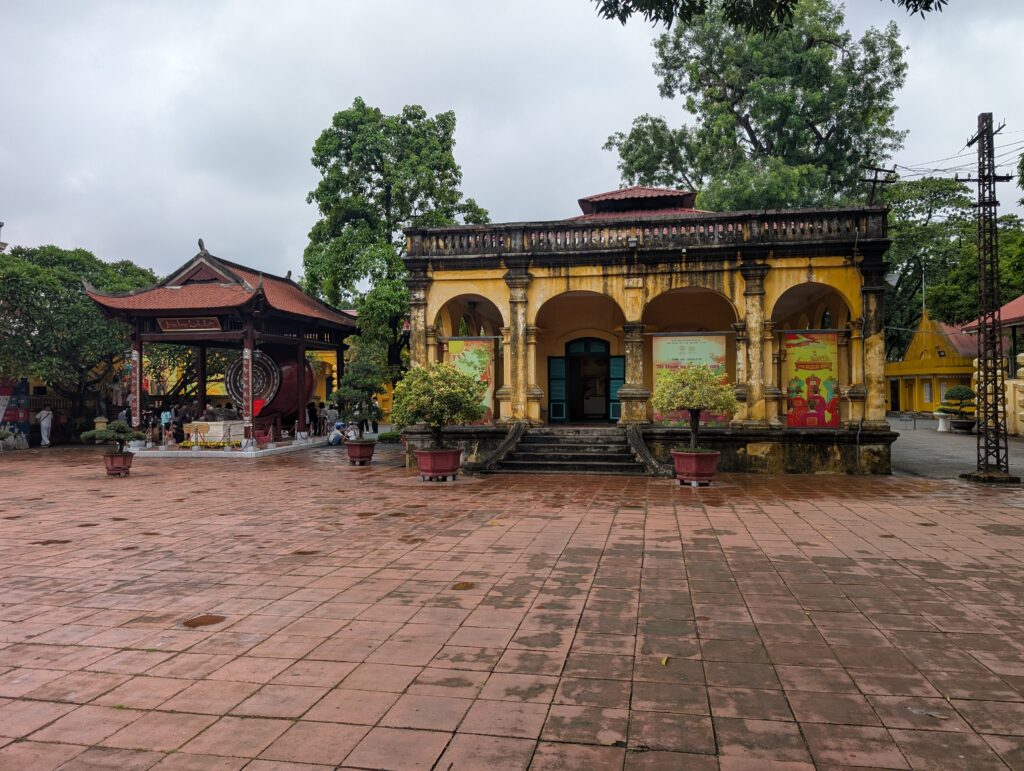
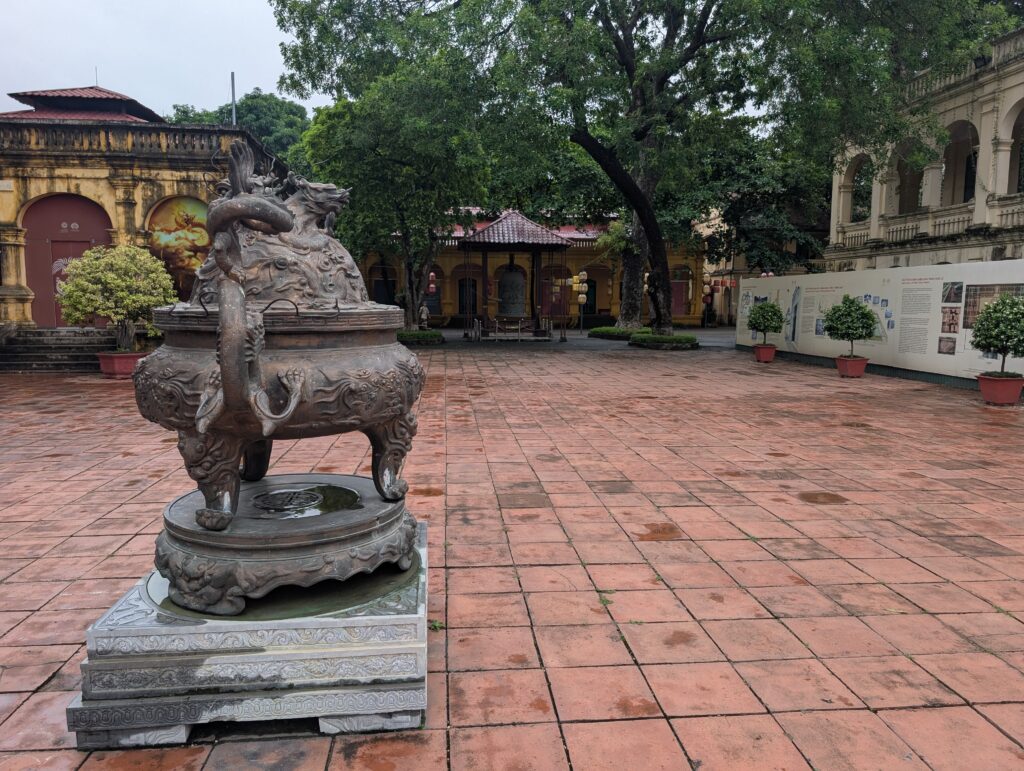
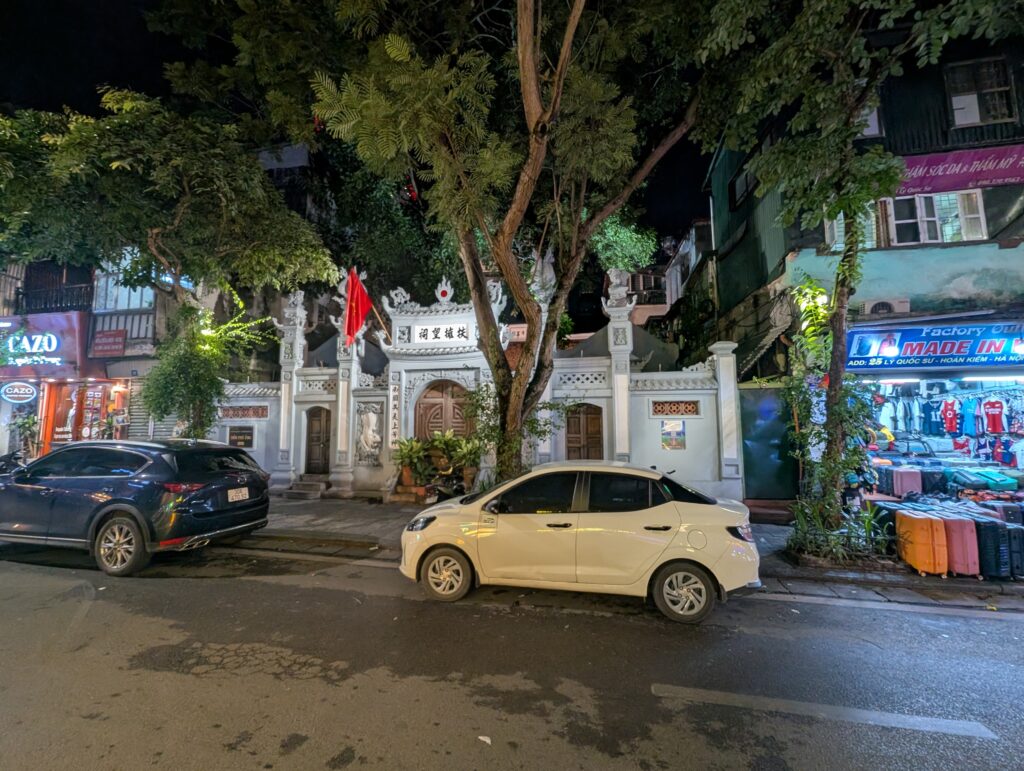
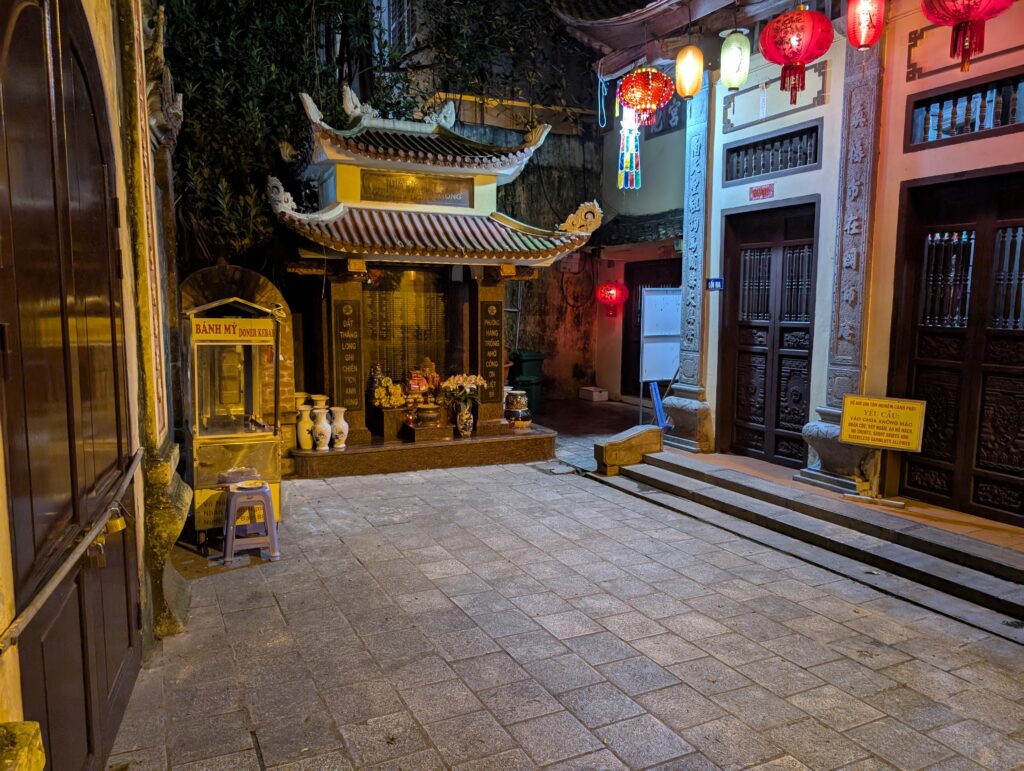
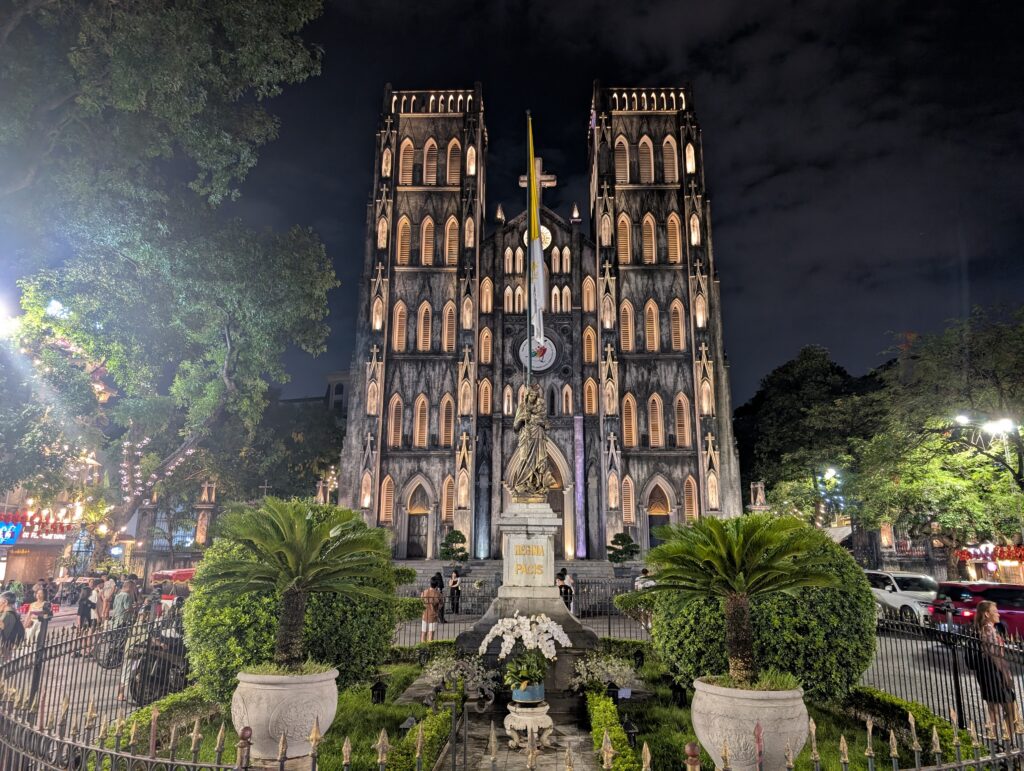
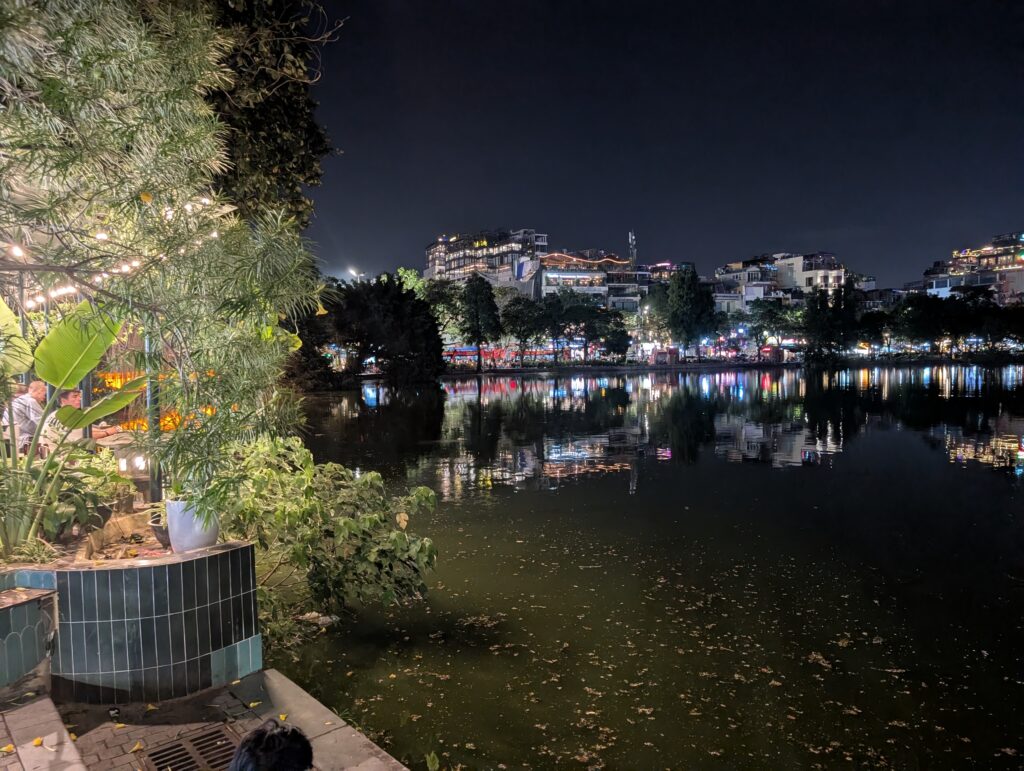
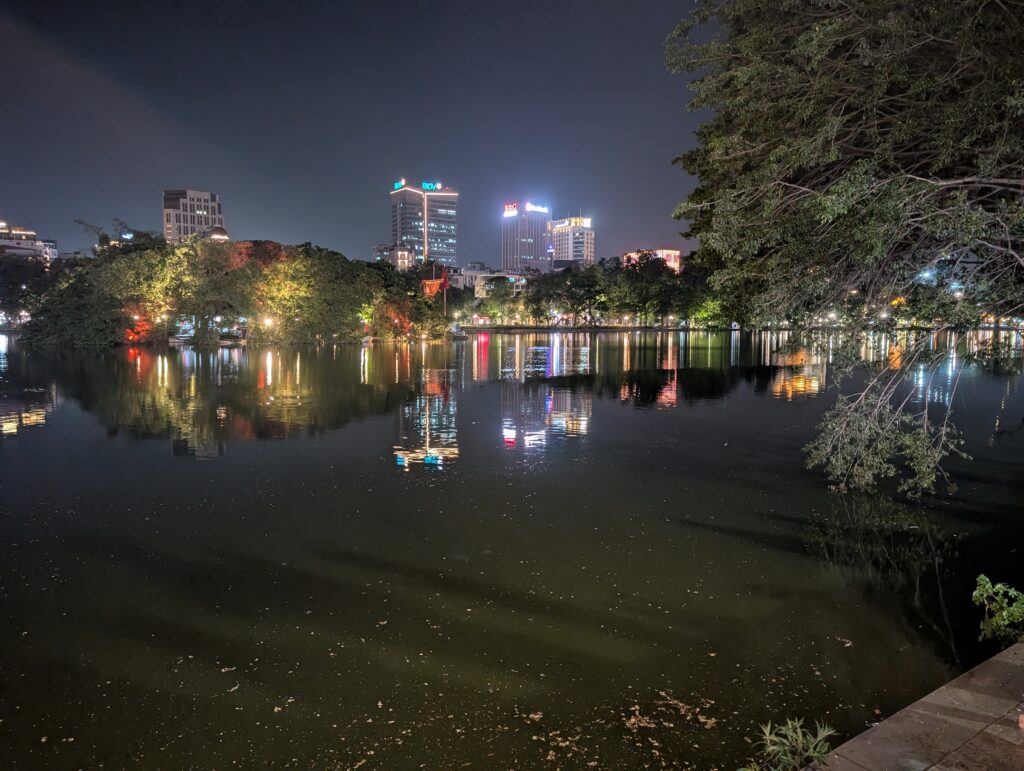
My first stop on the morning of the 3rd was Hoa Lo, a museum on the site of the prison where American prisoners of war were held during the Vietnam War. American prisoners dubbed the place the Hanoi Hilton. It had been a French prison long before American P.O.W.s arrived. I discuss Vietnam museums in more detail in an article specifically discussing that topic. To read more about Vietnam museums, click the tile below.
After visiting Hoa Lo, I grabbed a bite to eat, then went to the Temple of Literature. Not really a temple, this was the first university in Vietnam. It was established in 1070 for the study of Confucian principles. The complex was renovated and rebuilt many times over the years as dynasties changed, natural disasters intervened, and foreign powers penetrated. Eventually, the French dismantled much of what was left in the early 20th century to make more room for hospital facilities. The university was not only used to educated crown princes, but also to train members of the governing elite, and later to prepare students for an exam system similar to that implemented in China. On the site, there are 82 centuries-old stellae remaining commemorating students who passed the rigorous exam system. The overall layout of the Temple of Literature consists of five concentric courtyards, leading to an interior area, giving the appearance of a temple.
As I walked over to the Ngoc Son Temple by the lake, I noticed numerous street vendors who sold flowers, which seemed like a different aspect of the street economy compared to what I had seen in other places. There are other small temples here and there around the Old Quarter. There are many examples of French colonial architecture. There is an opera house.
I ate at another meal at a street eatery, and discovered xoi, one of my favorite Vietnamese food offerings. Xoi (pronounced szoi) is sticky rice. It is always served with some kind of topping, but the toppings come in endless variations. I love rice and found every variety I tried to be scrumptious. A fellow traveler, a young podiatrist from Hong Kong, asked how I liked the food. I told her it was excellent. This blossomed into a pleasant conversation and gained me a friend for the rest of my time in Hanoi.
Like most people with Chinese names, Rudy had taken an English name. As a child, a teacher had assigned her the name Ruby, but she frequently transposed her d’s and b’s. As a result, her name morphed into Rudy. I explained to her that this was generally a masculine name, but she laughingly responded that that was part of what made it funny and unique. Rudy is a very outgoing and interesting lady who explained to me the difficulties of making your way in Hong Kong. It is so expensive to live there that even as a 30 year old podiatrist, she lived with her parents. She did seem to enjoy the ability to share responsibility for pets and to do extensive traveling. She makes frequent Instagram posts under the moniker “W For Wandering,” where she has several thousand followers. Our tourism paths never crossed during the day, but periodically throughout the rest of her time in Hong Kong, we sampled inexpensive Vietnamese cuisine. I particularly enjoyed this, as I was sometimes lonely while traveling. I was glad to have a friend to eat supper with on my 53rd birthday a couple of days later.
(Continued)
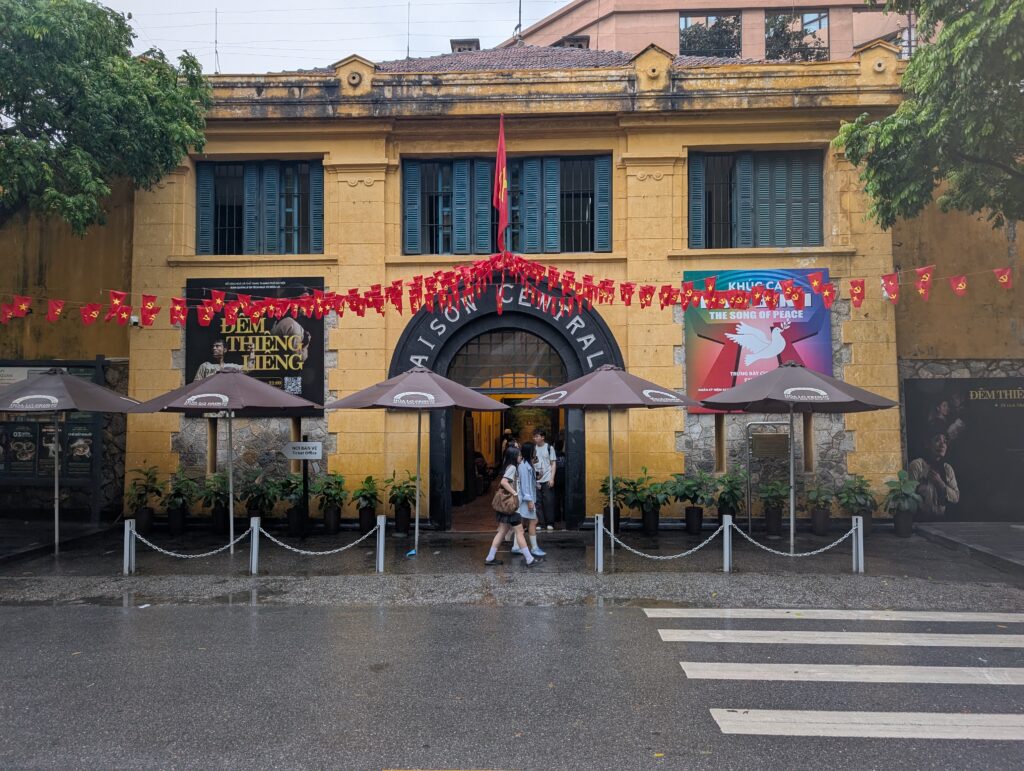
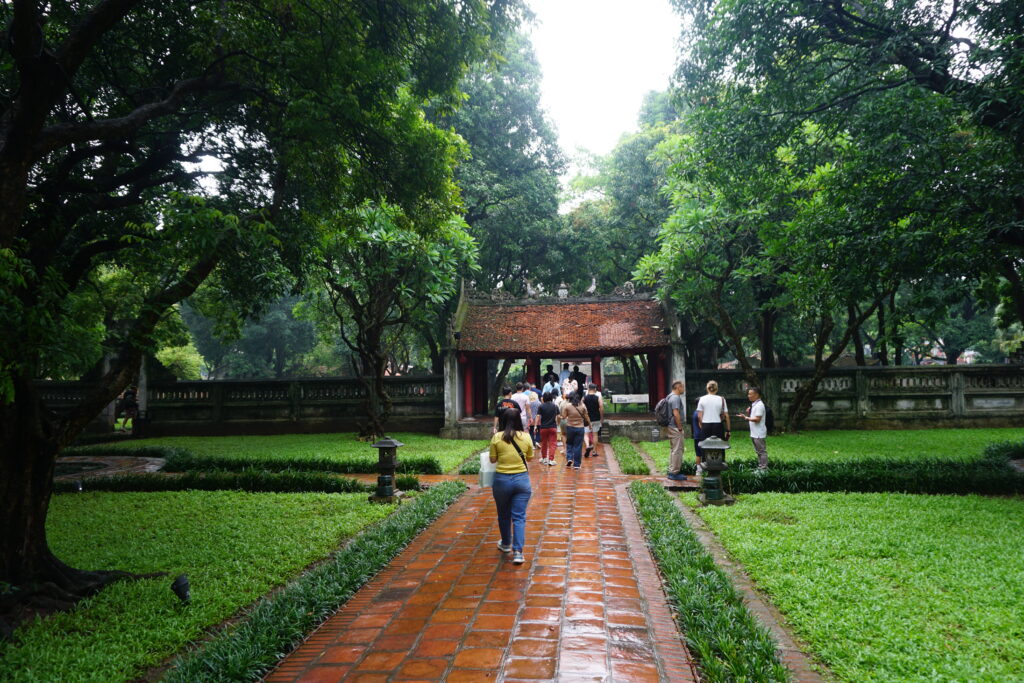
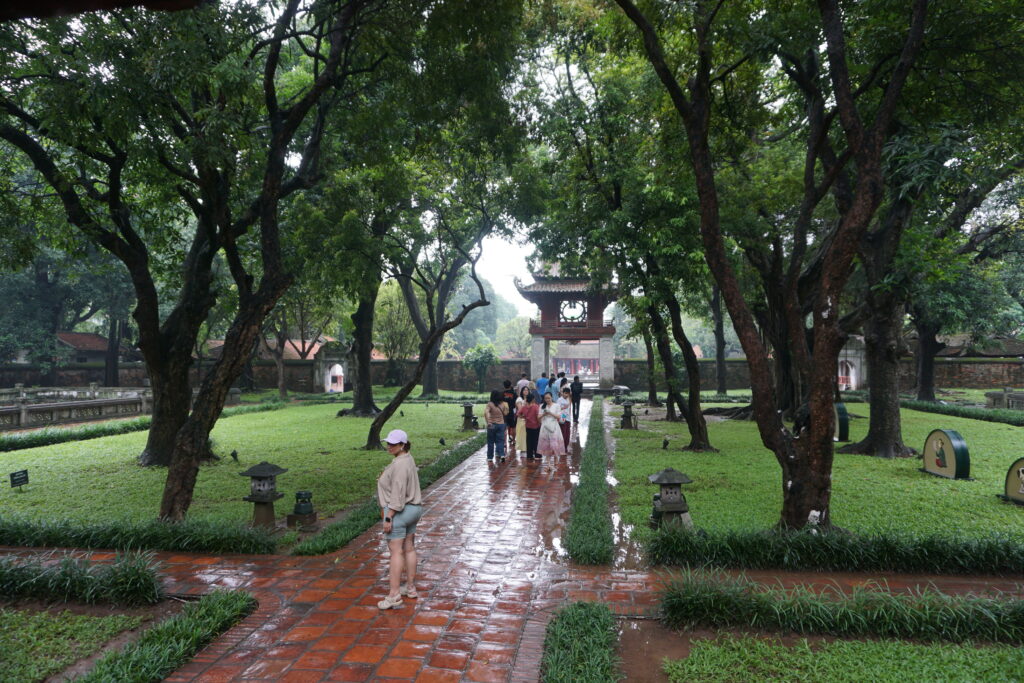
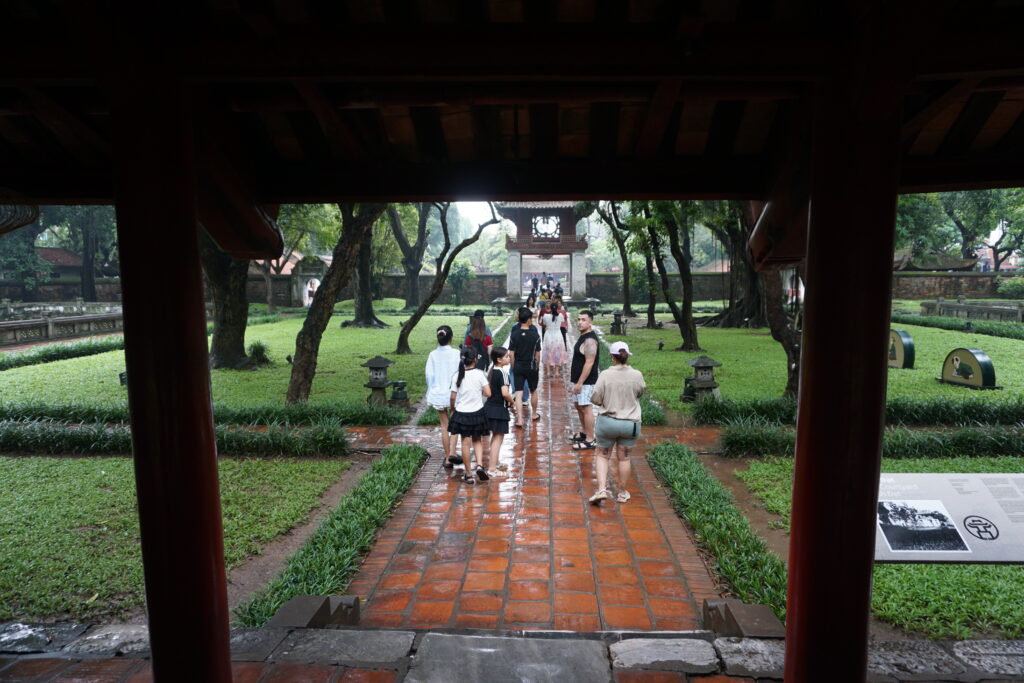
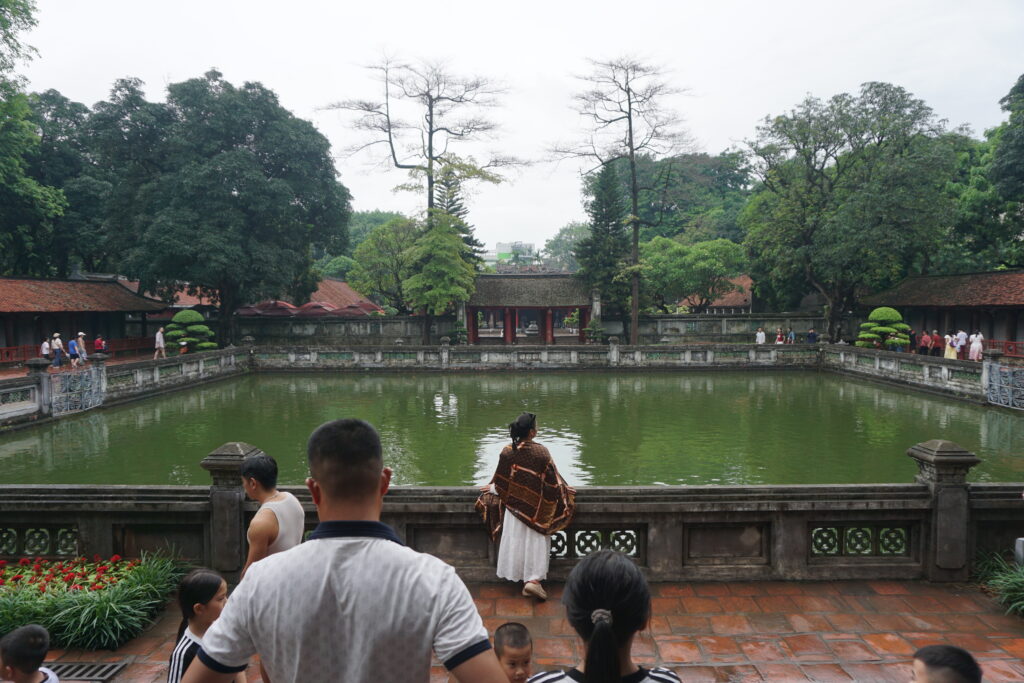
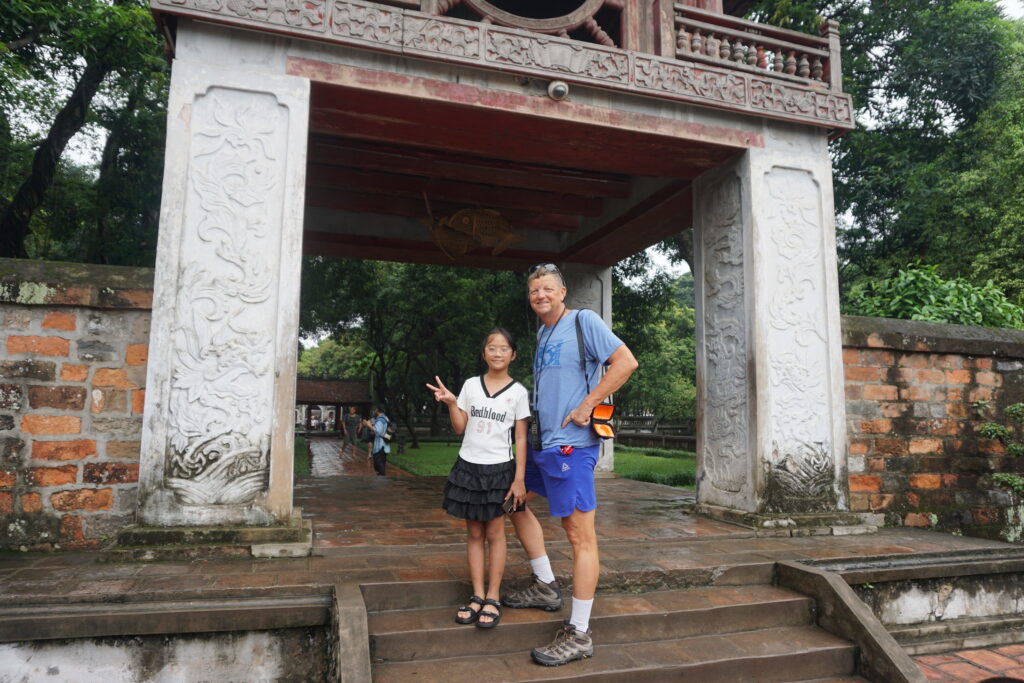
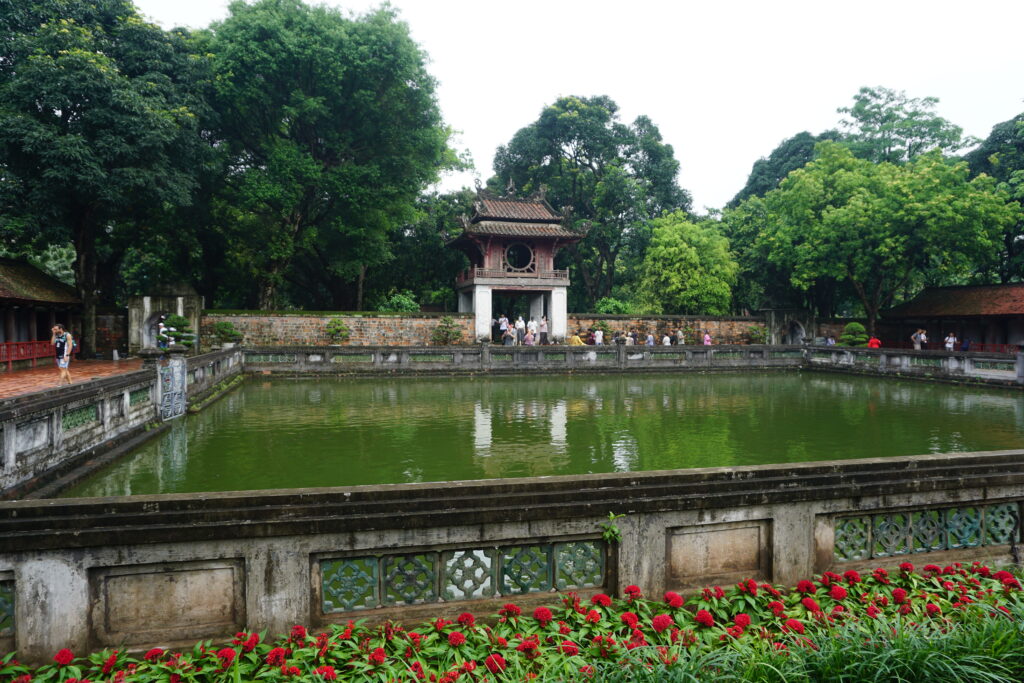
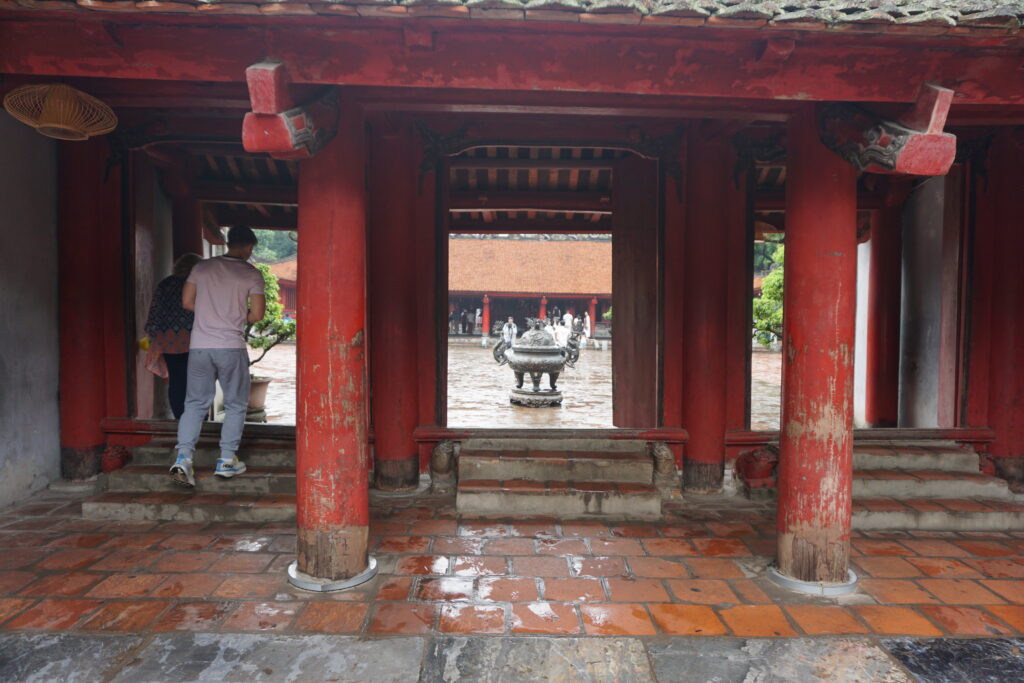
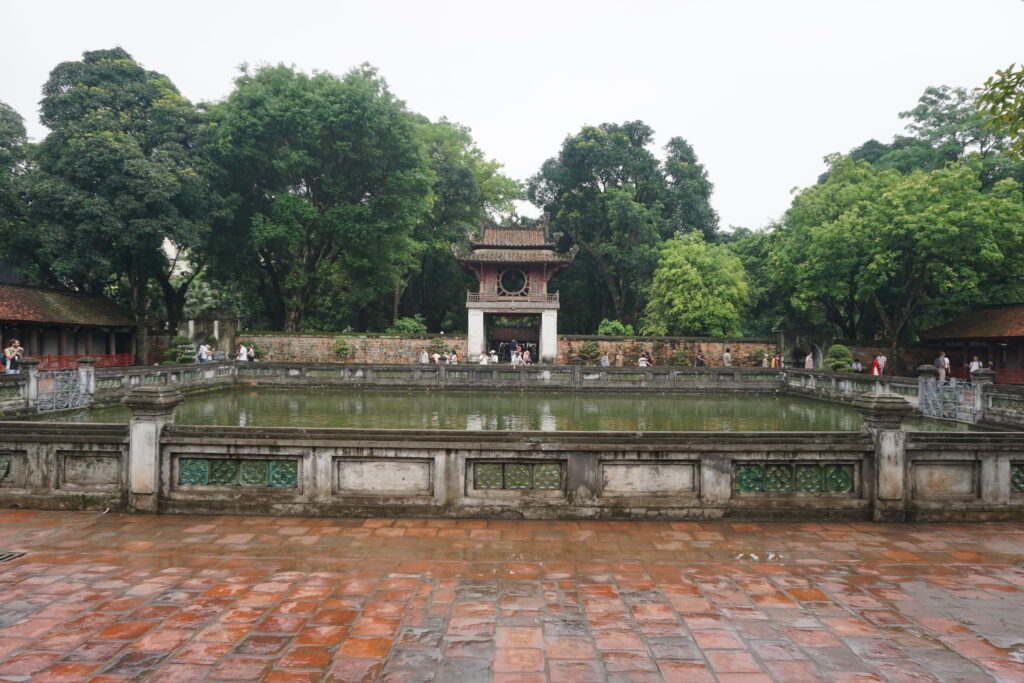
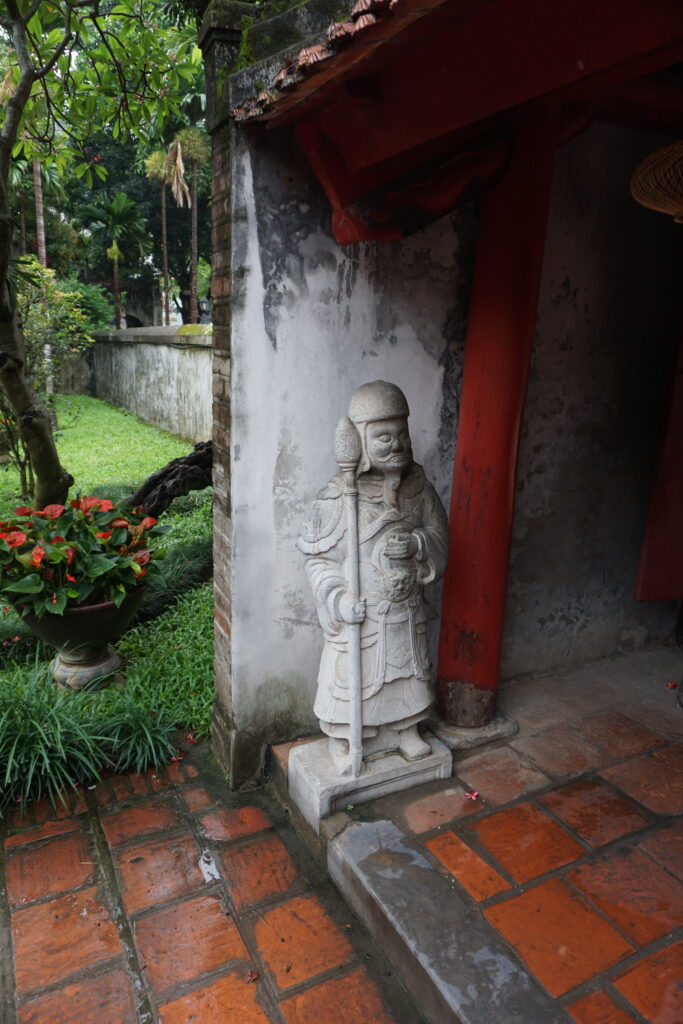
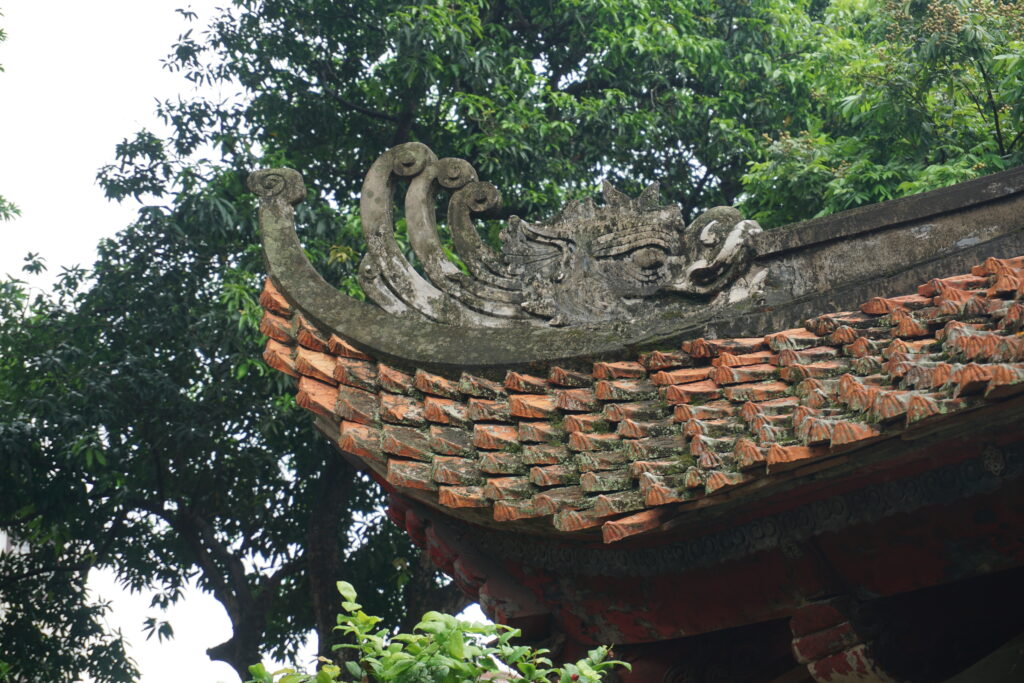
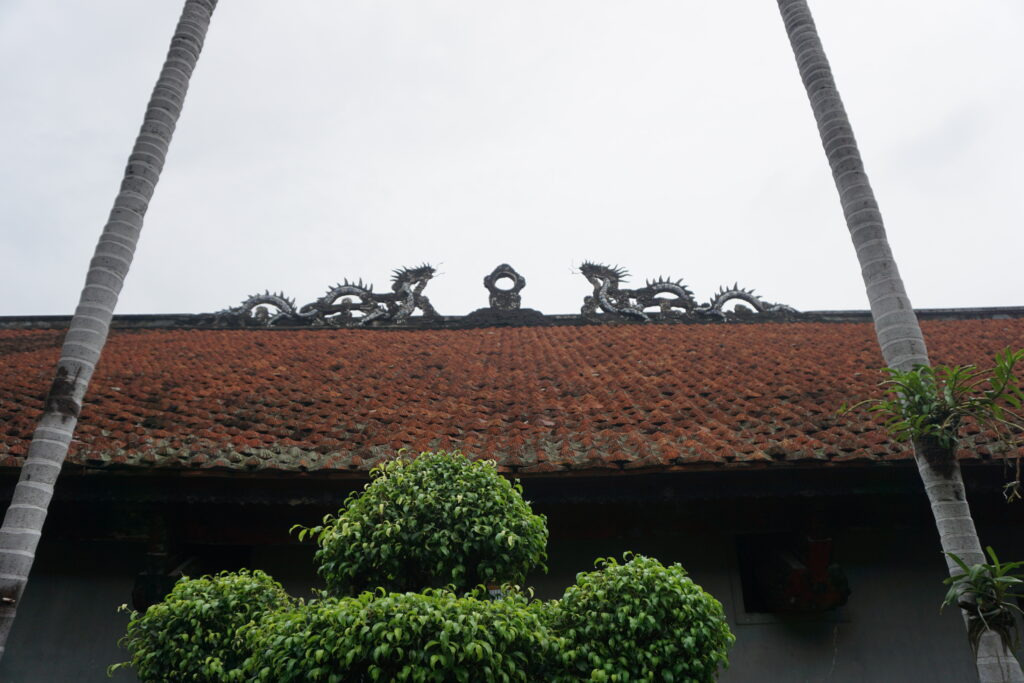
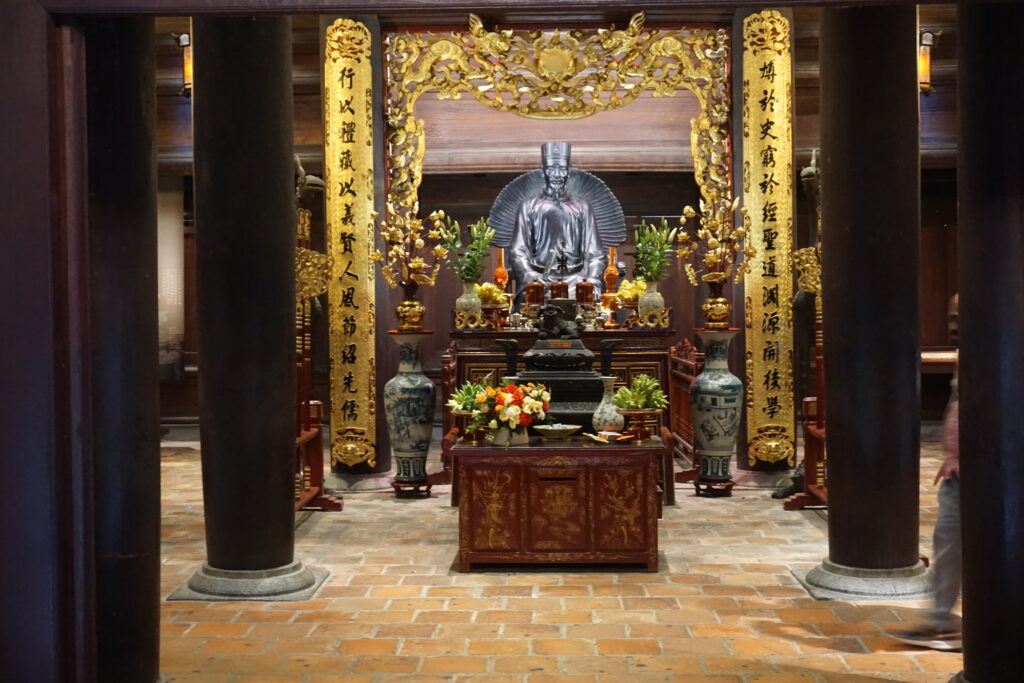
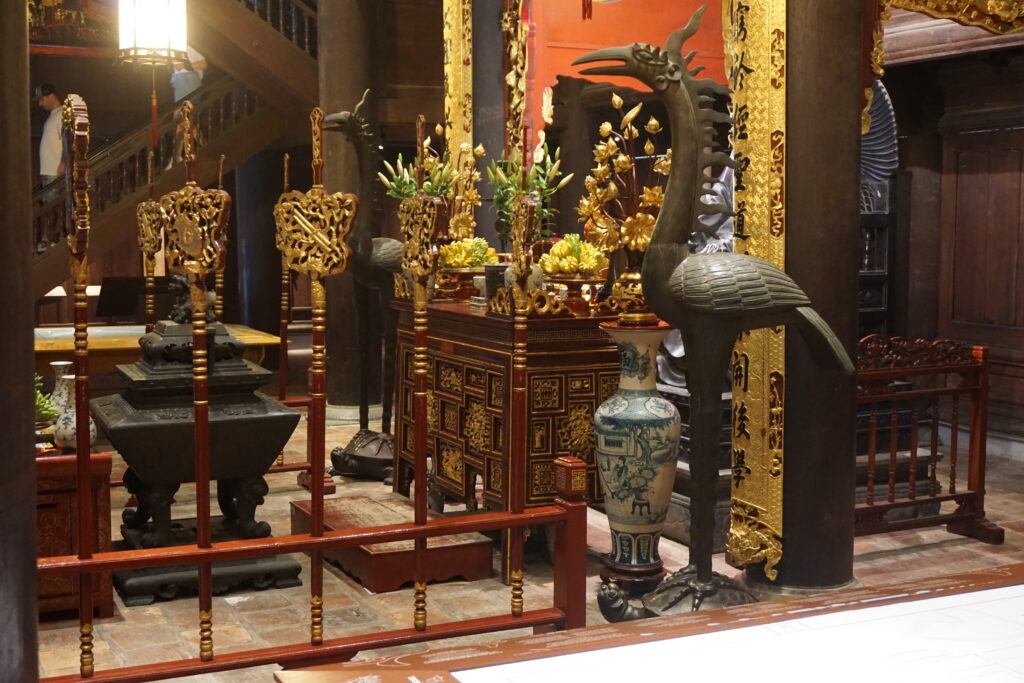
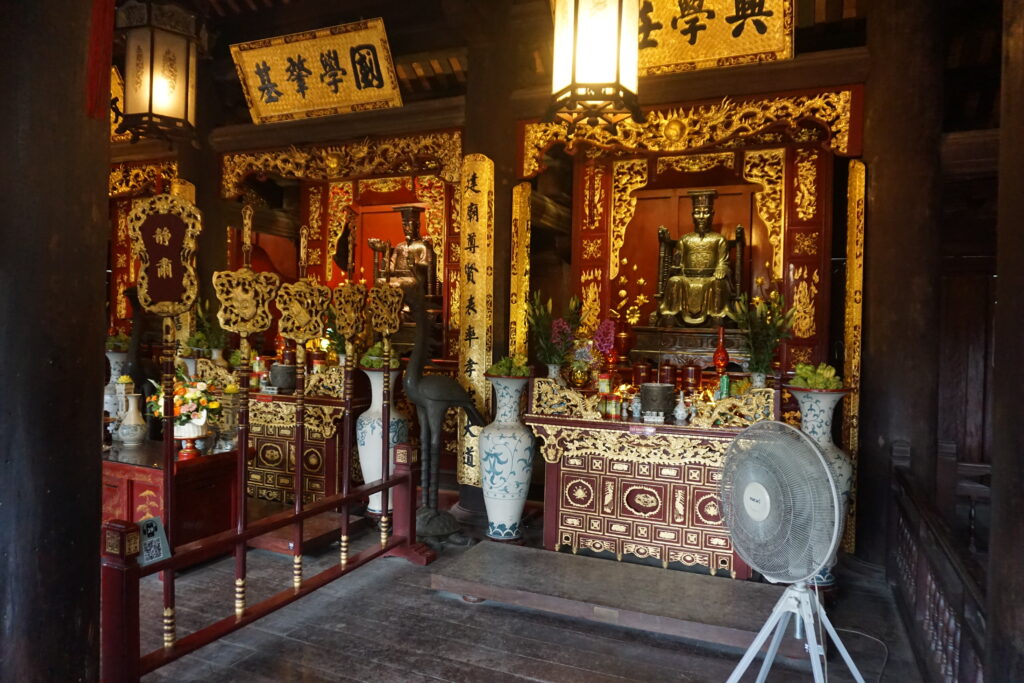
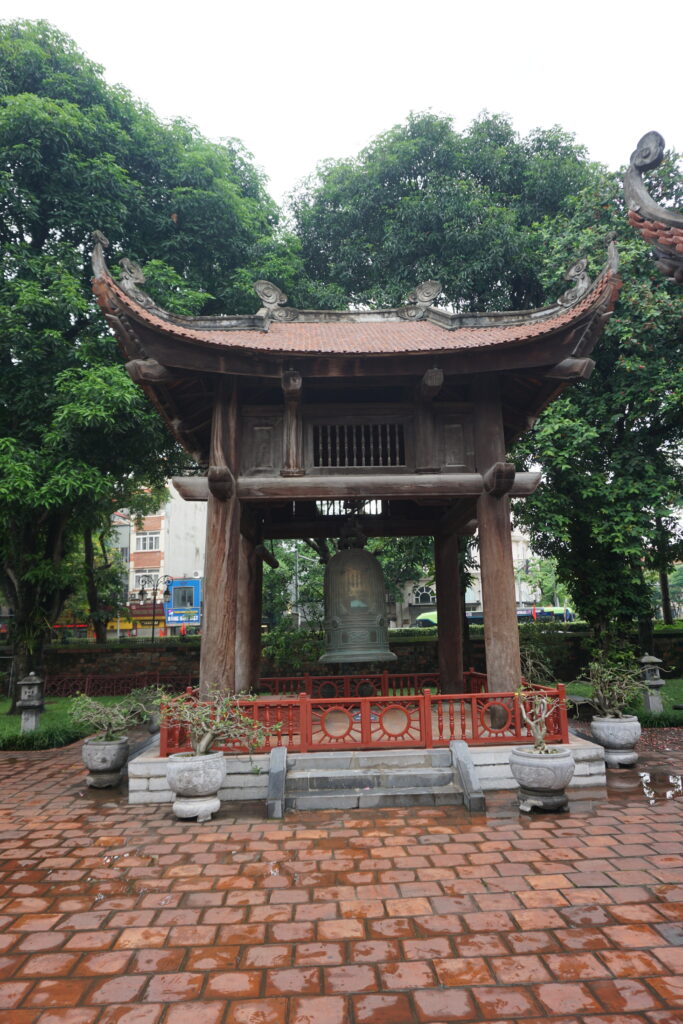
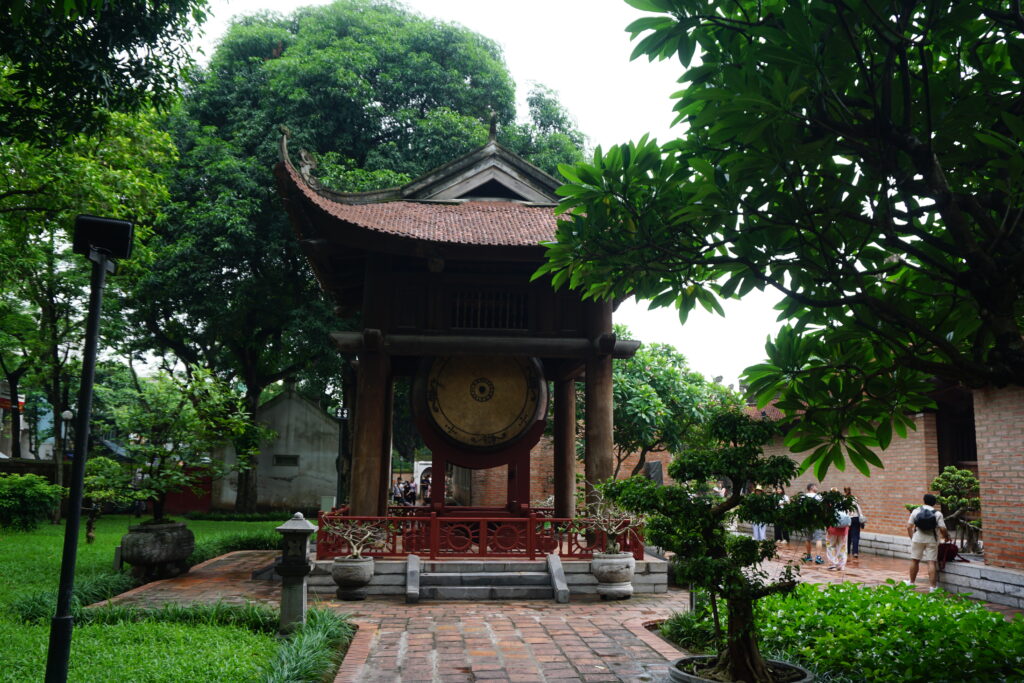
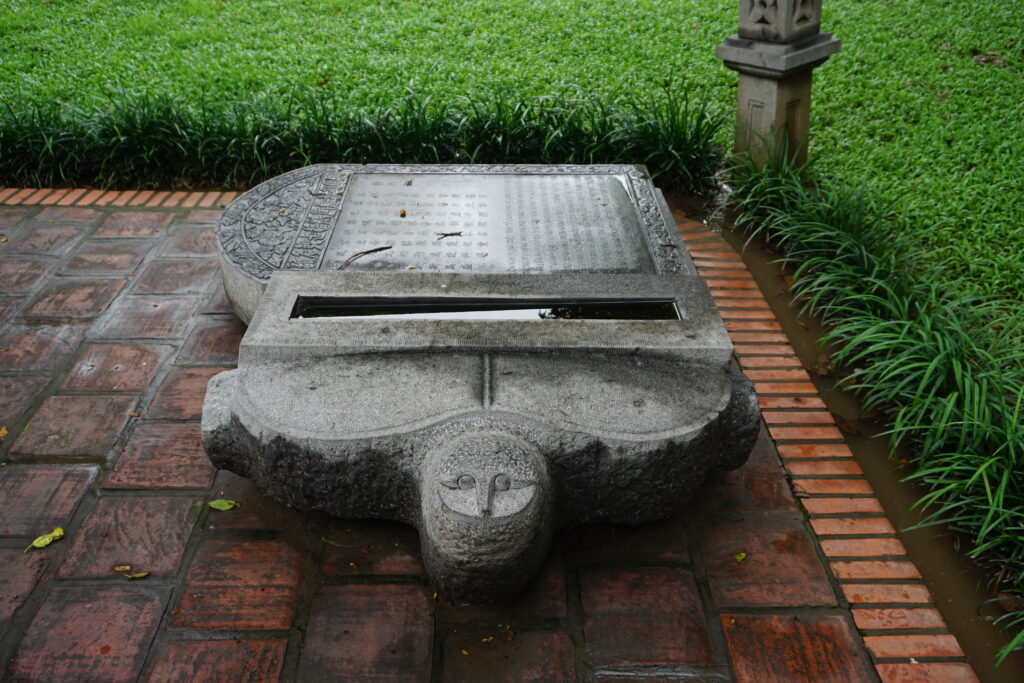
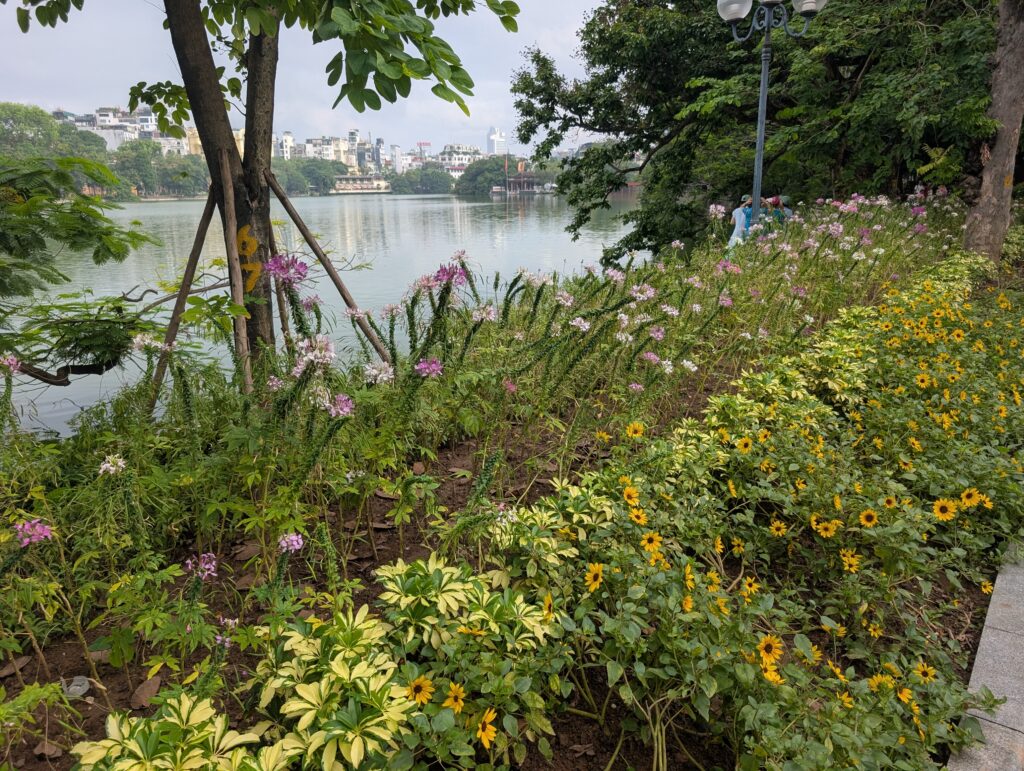

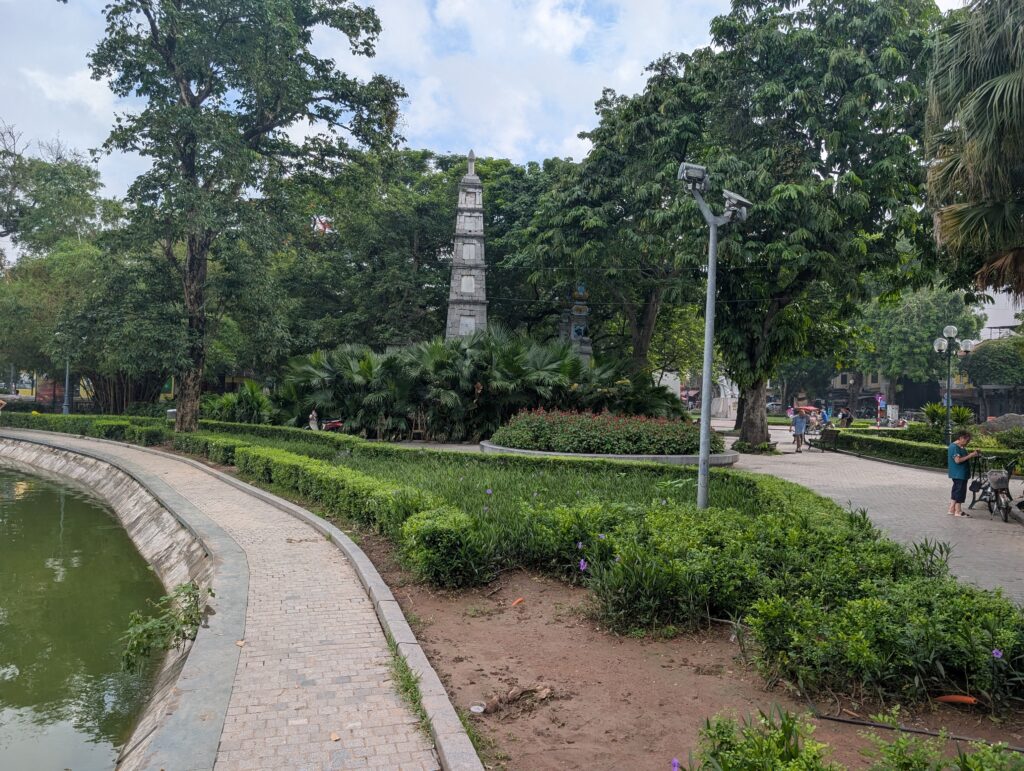
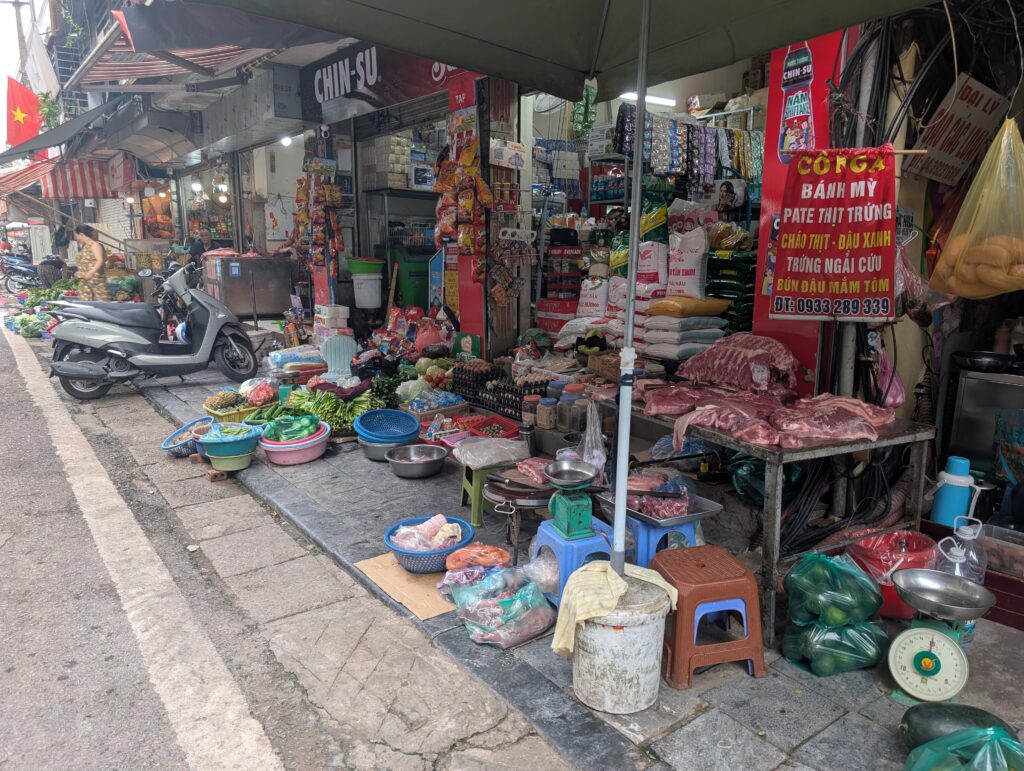
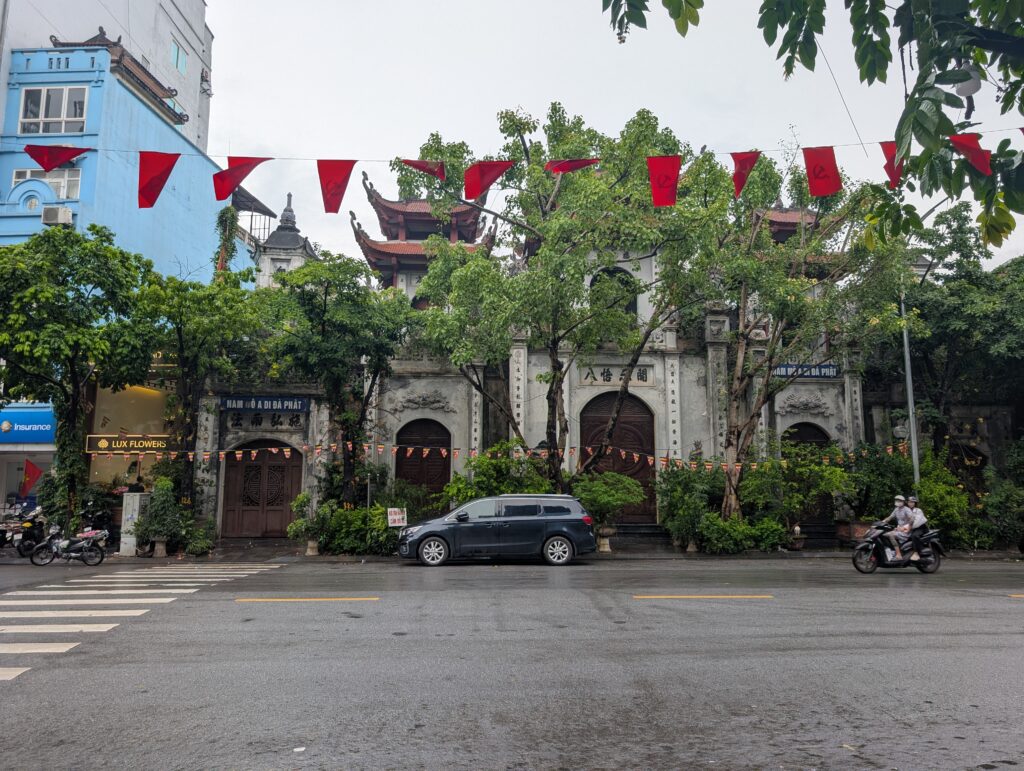
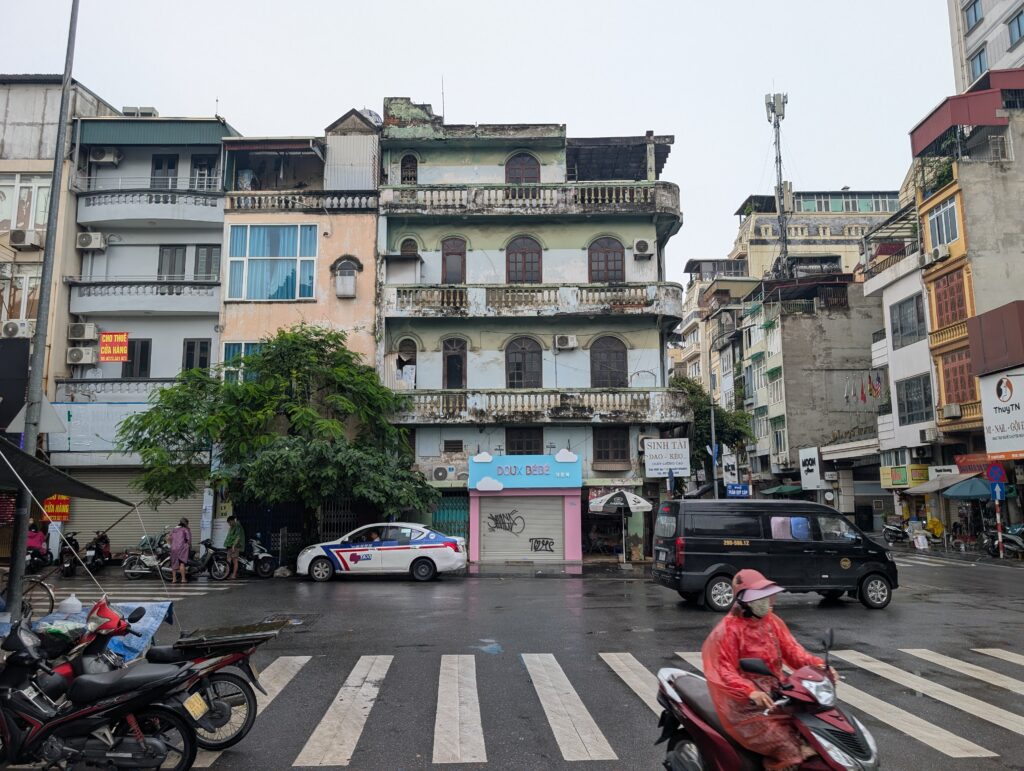
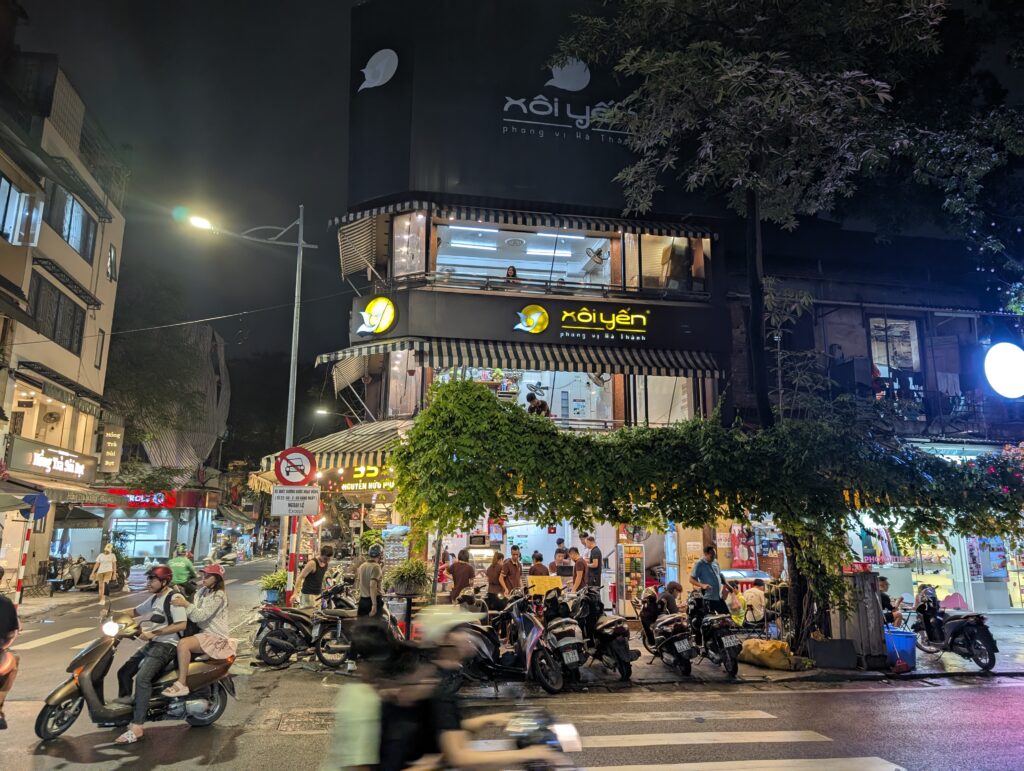
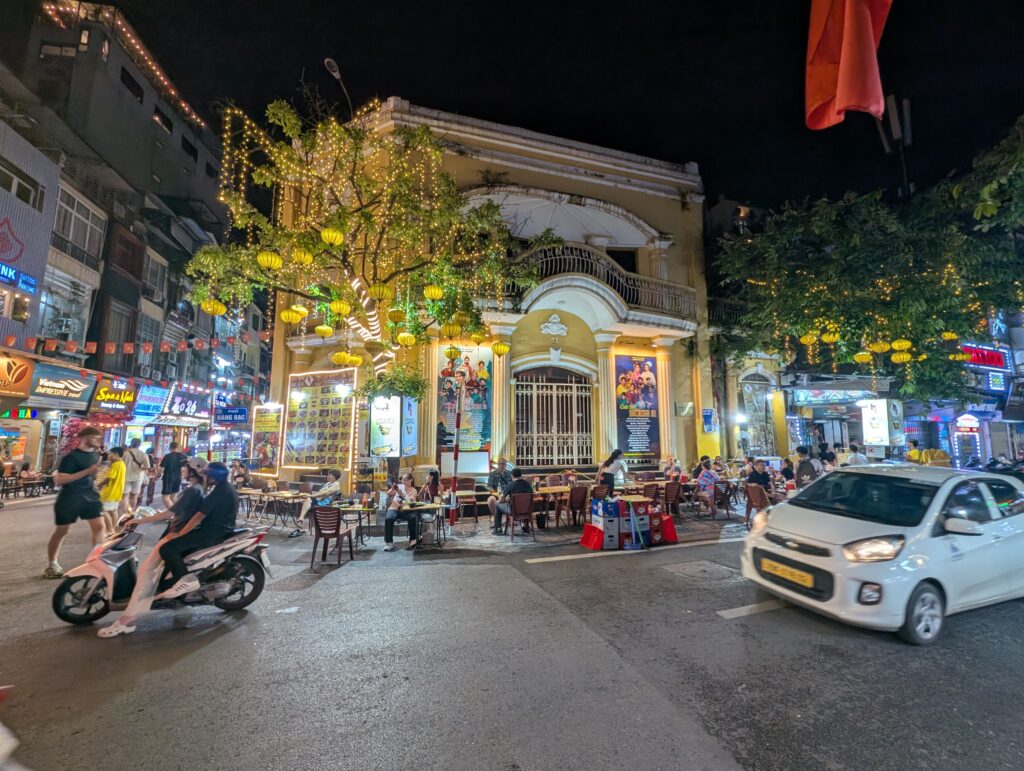
After a run around the lake, I spent my Independence Day – which also happened to be my 29th anniversary – on a Ha Long Bay cruise. The friendly staff at the Rising Dragon Inn arranged this day trip for me. Ha Long Bay is a couple of hours’ drive from Hanoi. This can vary depending on traffic, of course. For just $40 U.S., I received a comfortable bus ride from Hanoi to Ha Long Harbor and back, and enjoyed a guided boat tour. Our cruise consisted of three stops, a generous lunch, and a small snack in the afternoon.
One of our stops visited at Ti Top Island. Ti Top Island is named for Soviet Cosmonaut Gherman Titov, whose statue stands near the main beach area. Ho Chi Minh so named the island in honor of Soviet support of Vietman during its war against the United States. Ti Top Island features a little hike up to a peak with some very nice views. It also has a nice beach, though the water is pretty warm. I used the water to rinse off after of course sweating my way up the hill.
The whole area is quite picturesque, with huge rock columnar islands jutting up out of the sea. The otherworldly rocks rise up from the waters as far as the eye can see. At our second stop, we were afforded the choice of kayaking, riding a paddled boat, or jetting around on a speed boat for an additional fee. I opted to get a bit more exercise with the kayak. It was a two-man kayak, but as no one was immediately near when I shoved off, I was allowed to take one by myself. I paddled through a rock tunnel, around some inlets, and up near the fascinating rock formations. One Indian kayak crew claimed their kayak was damaged and hitched a ride back on one of the 15-man paddled boats, abandoning their initial craft. I think they must have just been tired. I grabbed their oars, and tethered their kayak to mine. I dragged it back to the dock and arrived just about the time I needed to return. I joked to our guide that I ought to get credit for bringing in an extra kayak. He later reported to the other guests that I had rescued another kayak. I got a lot of laughs by responding that I left the passengers and just brought back the plastic boat.
Our final stop offered the opportunity to walk through a fairly large set of hikeable caves. Song Sot, or Surprise Cave was supposedly named with found at the turn of the century by French explorers. While this is not Carlsbad Caverns, I was surprised by the size of the cave on such a small island. So it lived up to its name. It had some beautiful features and stunning views of the harbor at the exit. There was even a huge formation near the exit that looked like a dinosaur claw descending from the ceiling, in front of the bay view. It was a great photo spot, and many of my fellow cruisers took advantage of this formation.
We rolled back into Hanoi pretty late, considering we had not had supper – about 9:00 p.m. I hopped off at the first stop in town, rather than riding the bus around for another hour as we reversed course dropping people off at other hotels. I scrambled over to a restaurant near the Opera House and devoured a plate of bun cha, and shrimp fried rice. Bun cha consists of either fatty stewed pork meat or more often pork meatballs over thin rice noodles. The smoky pork flavor is tasty, and I was so hungry I knew I needed the shrimp fried rice as well. It was all quite good, and I retired that evening satisfied, after enjoying some of Vietnam’s best scenery and food.
(Continued)
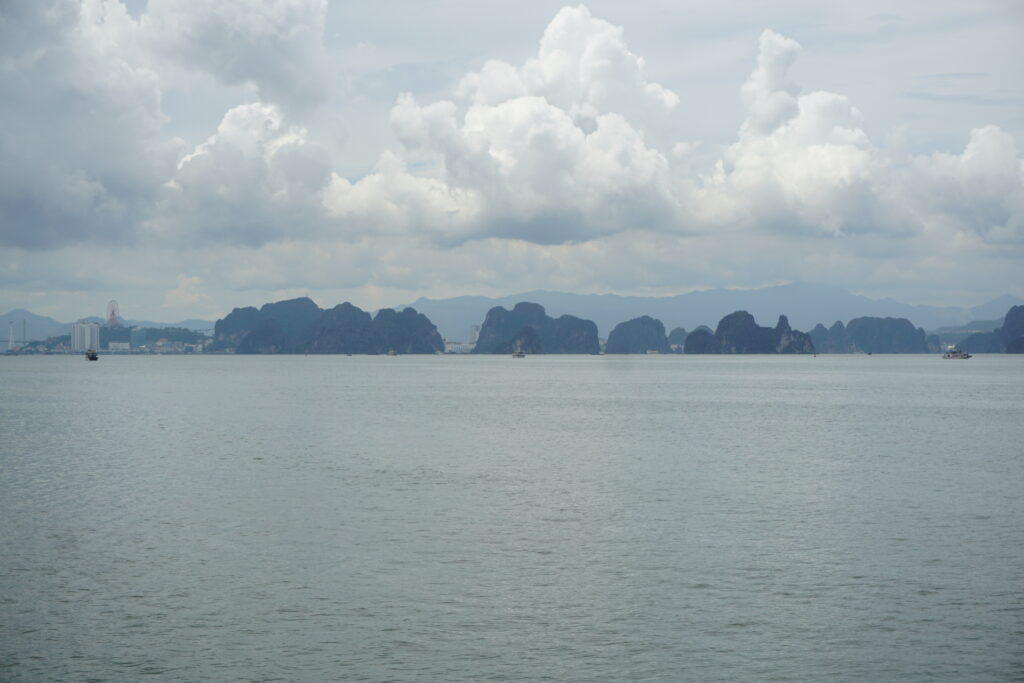
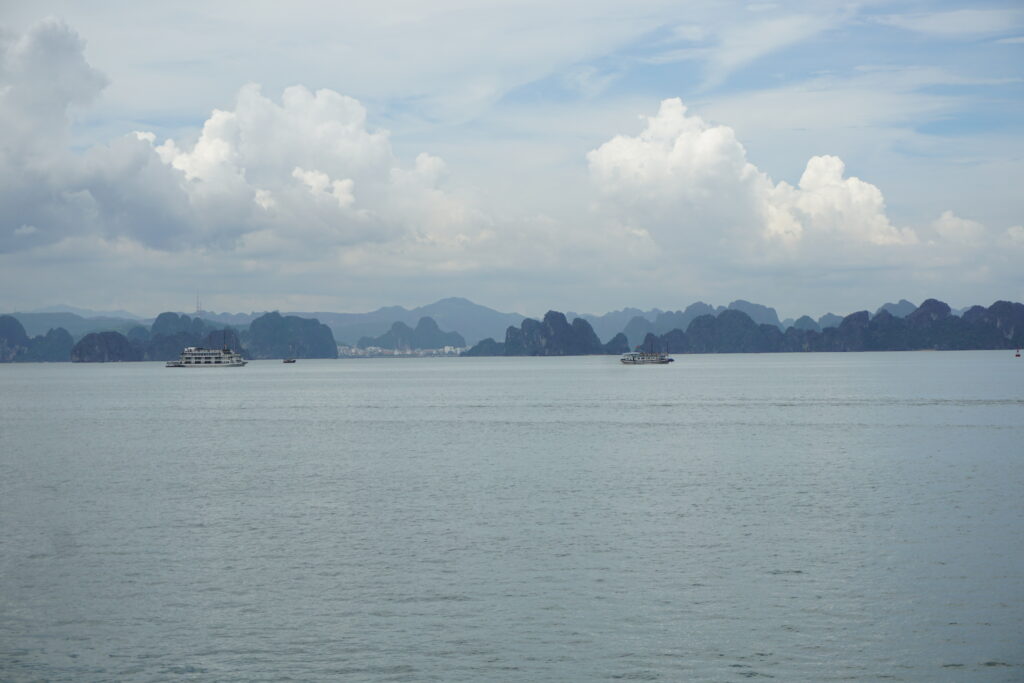
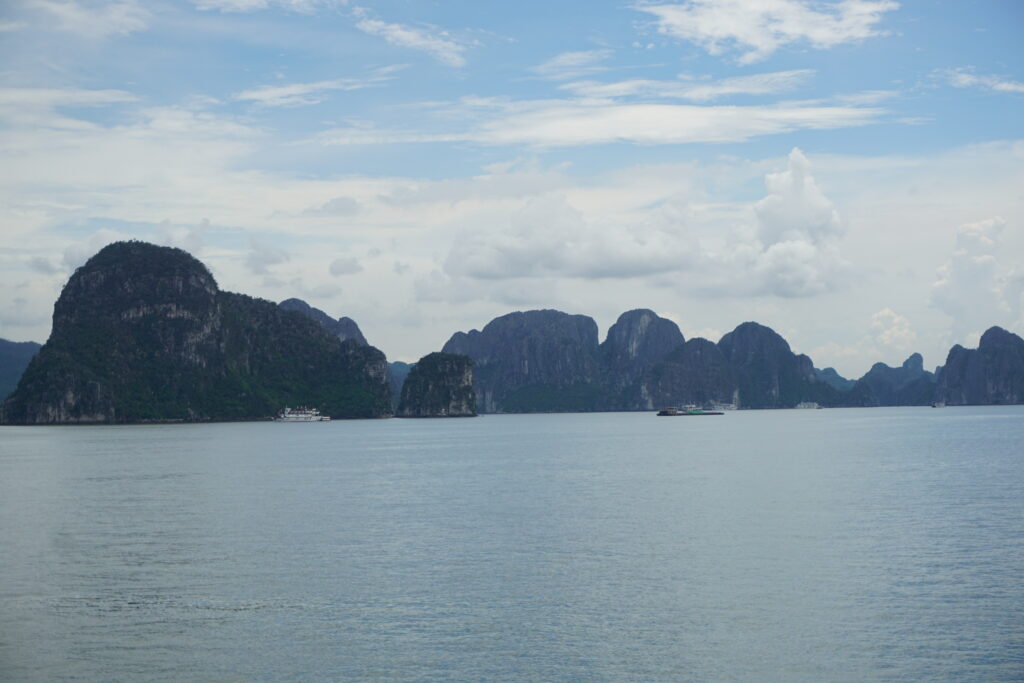
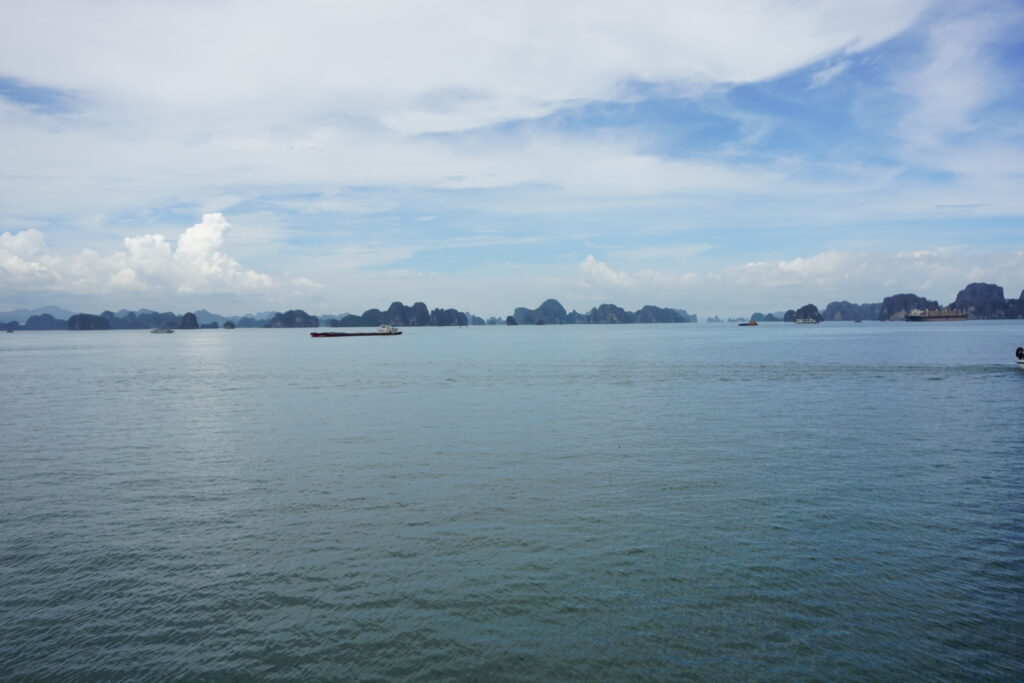
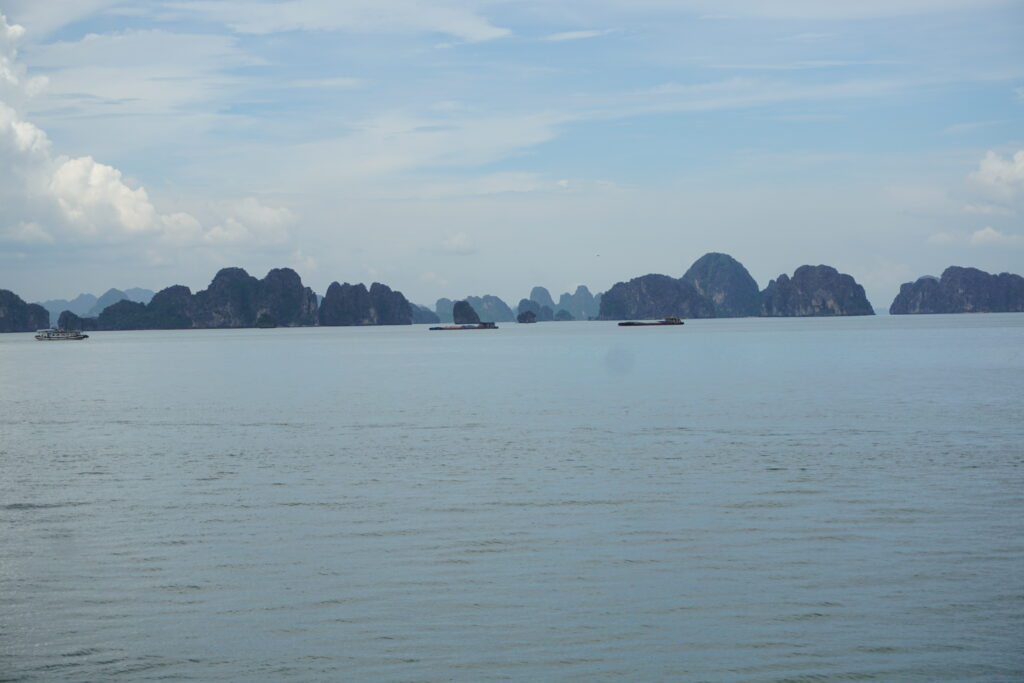
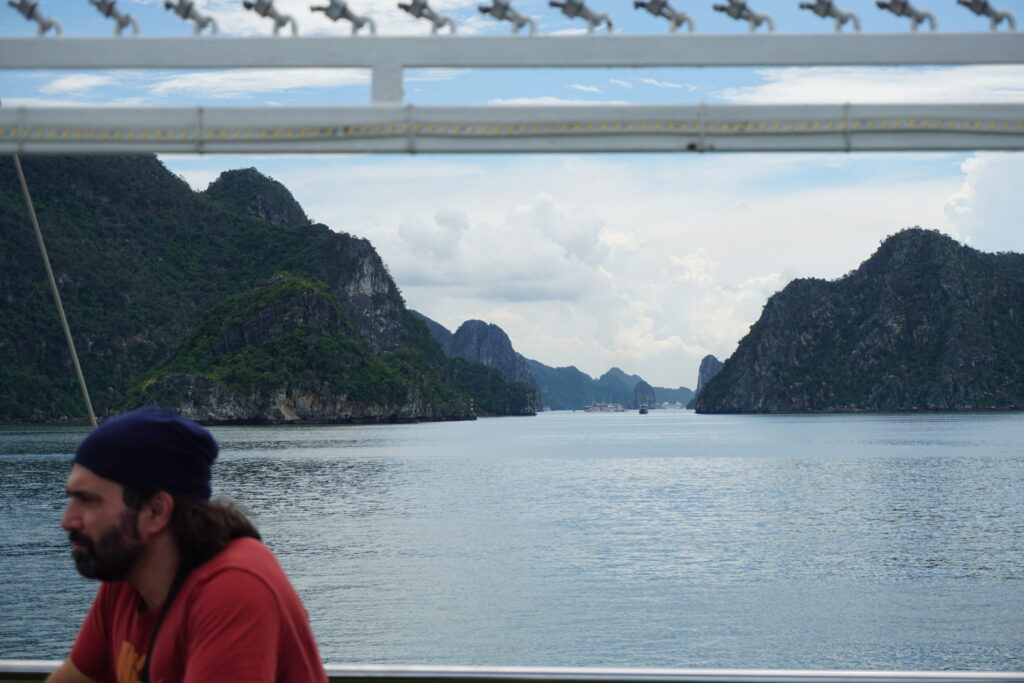
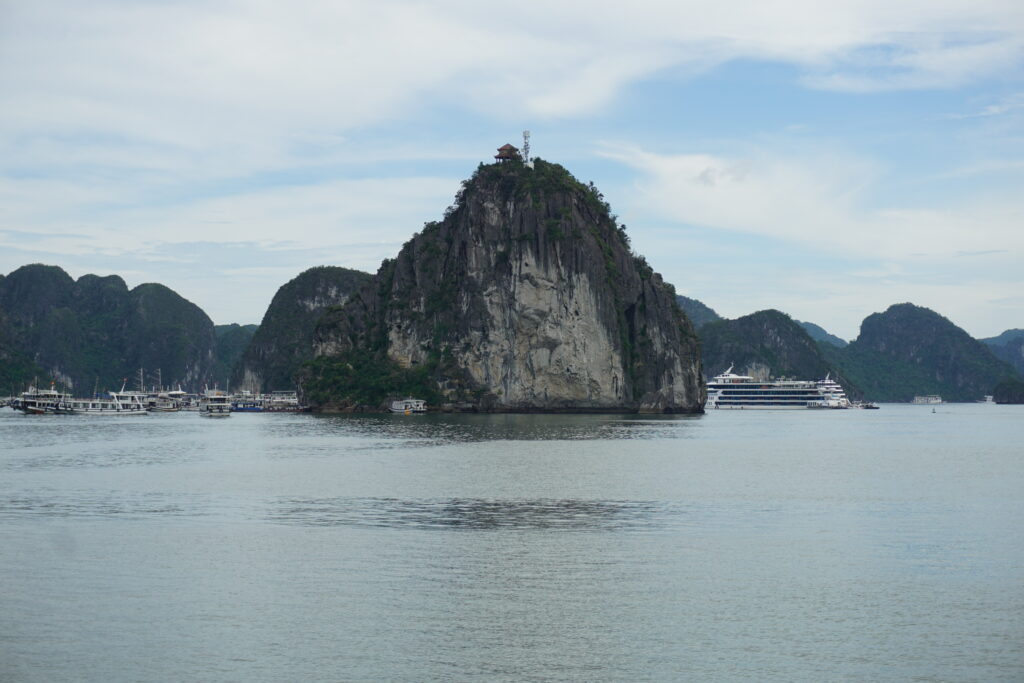
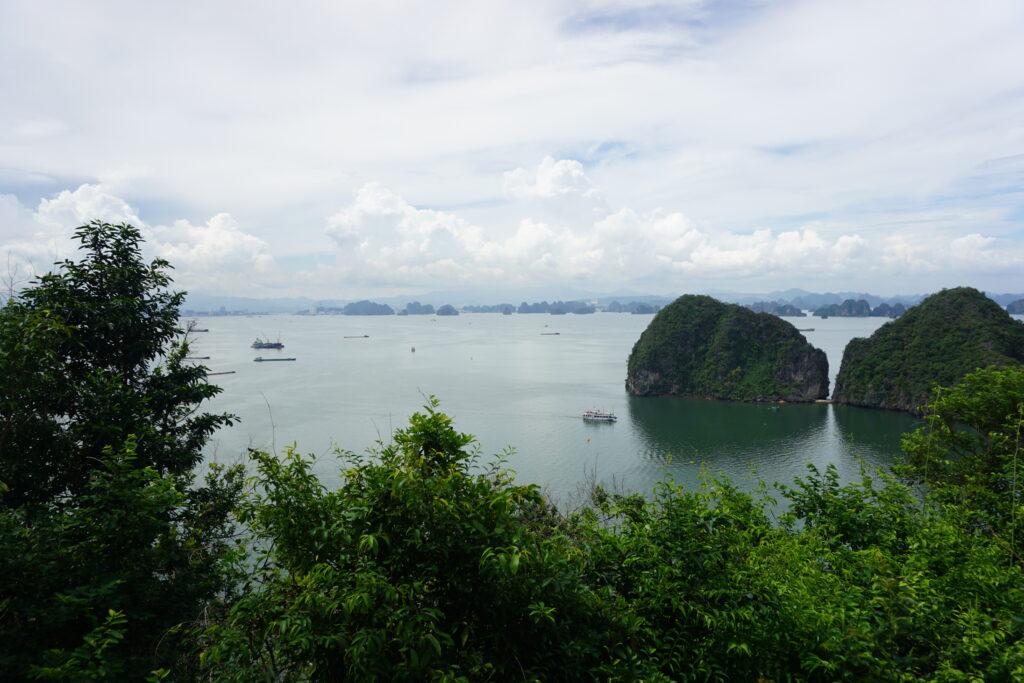
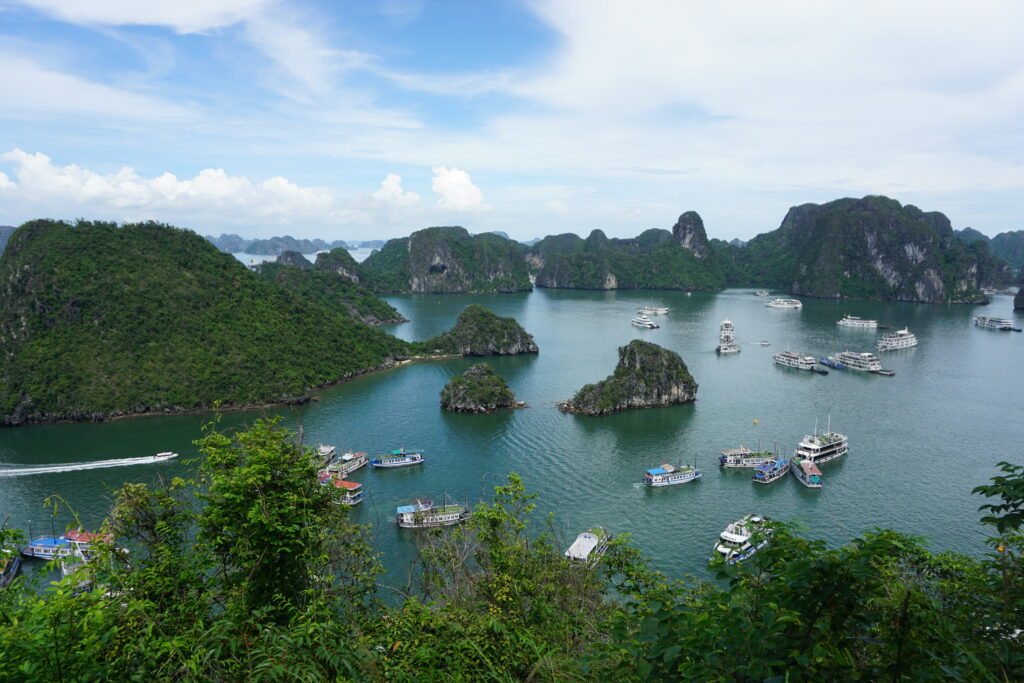
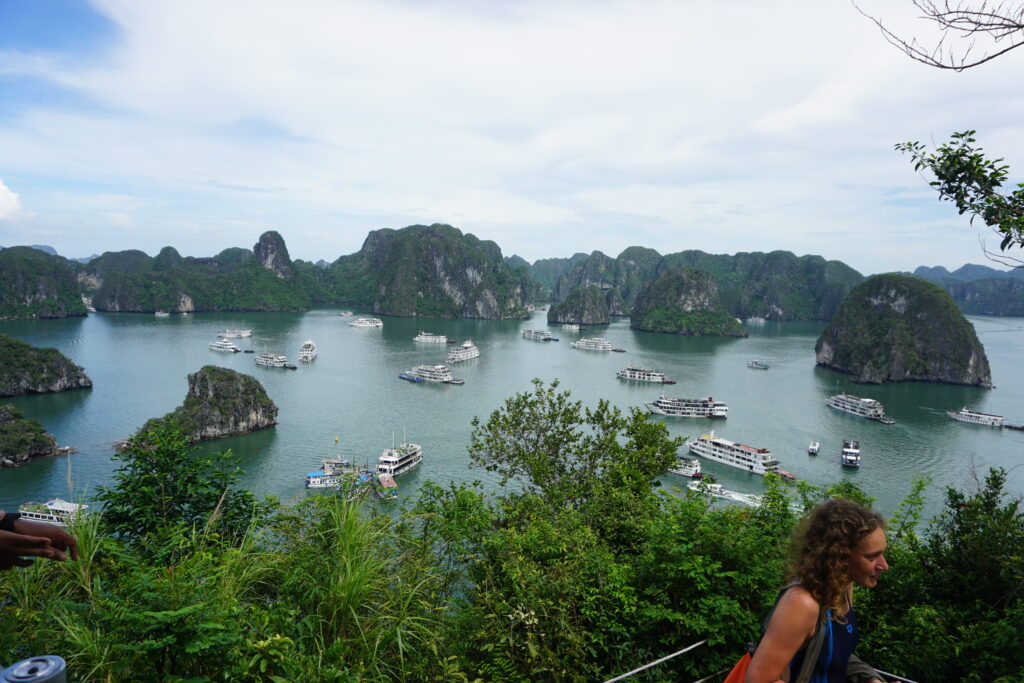
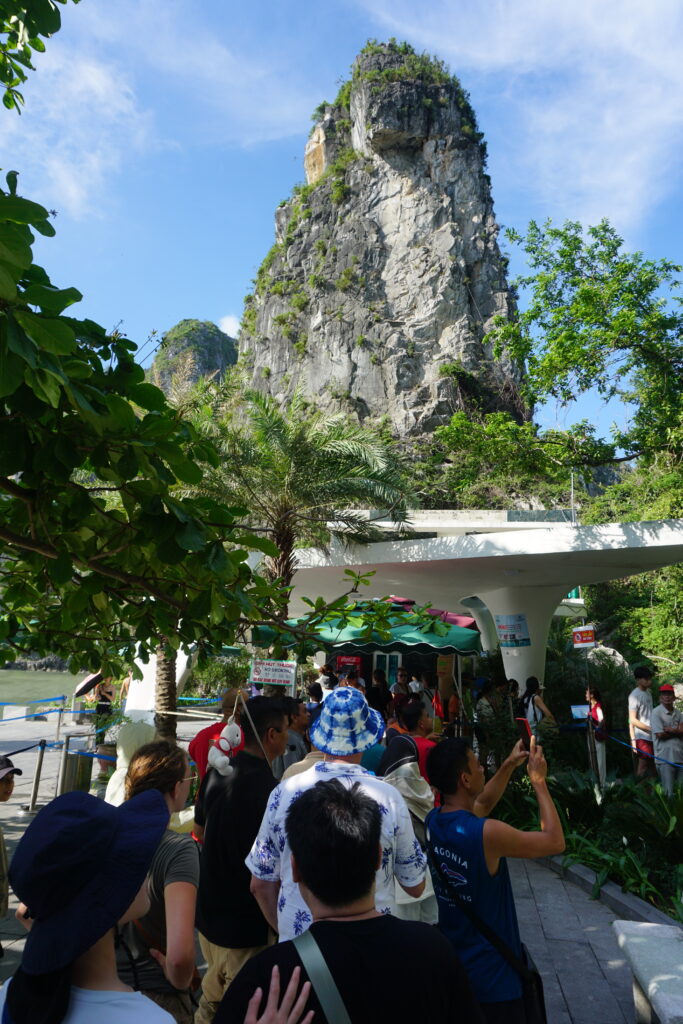
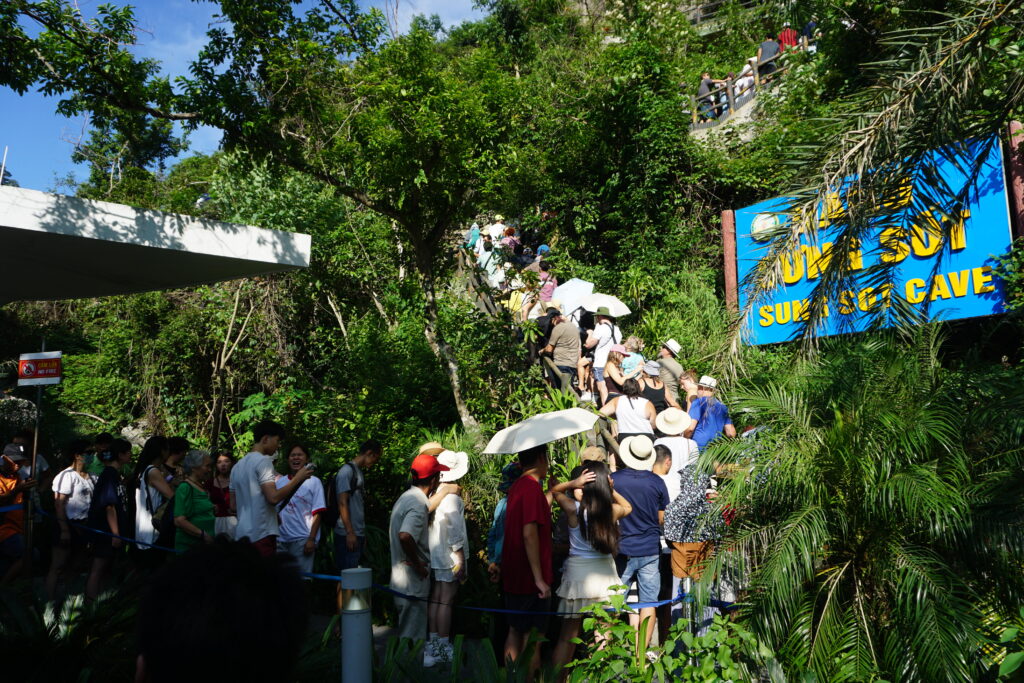
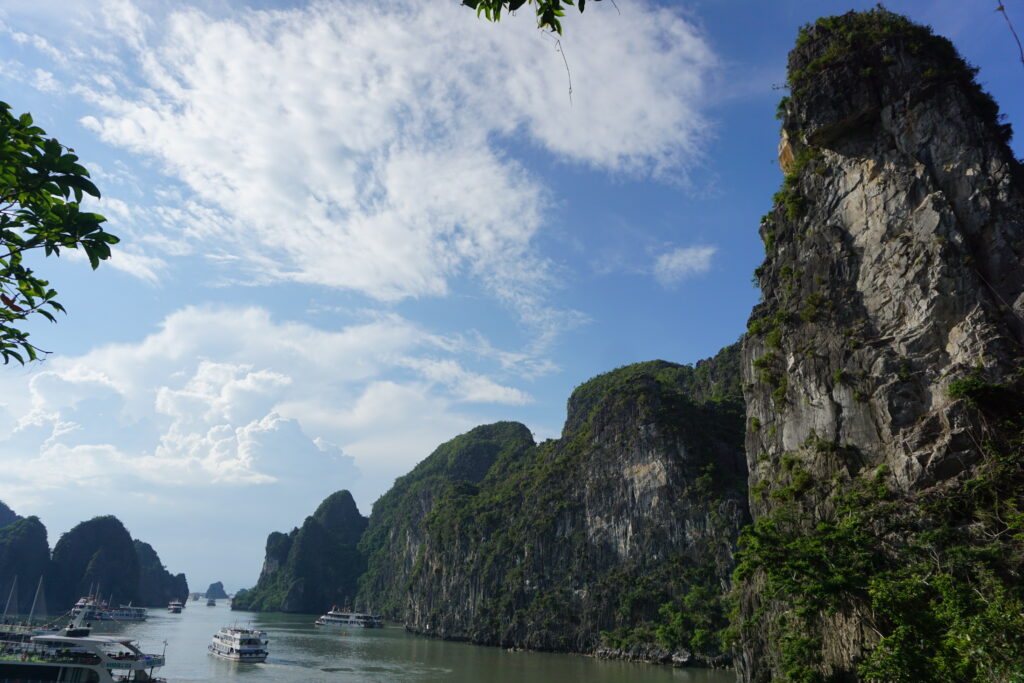
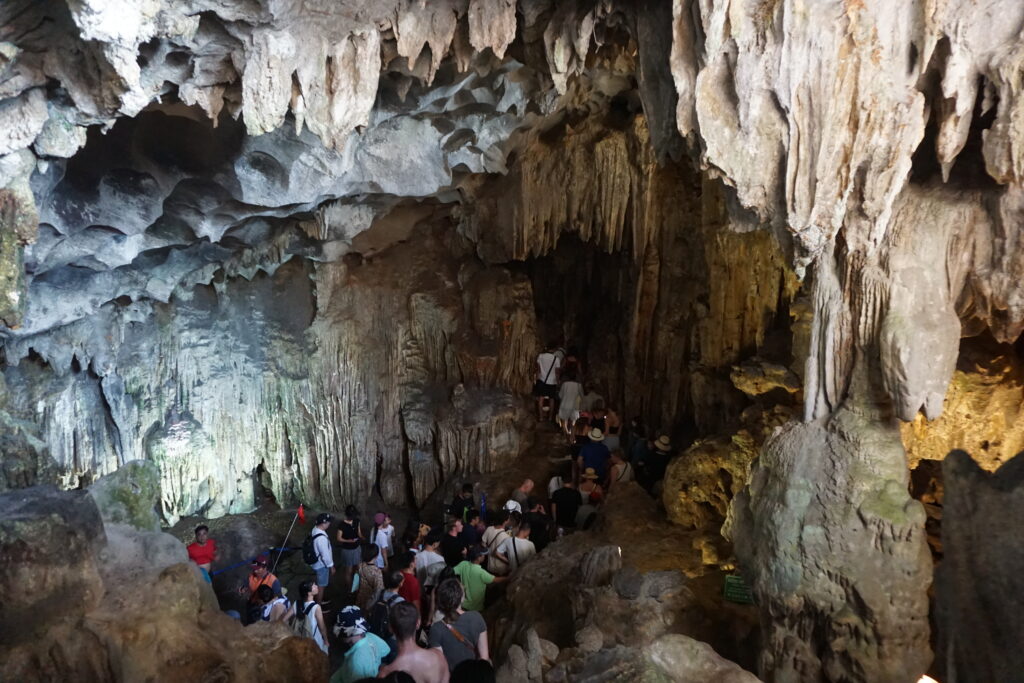
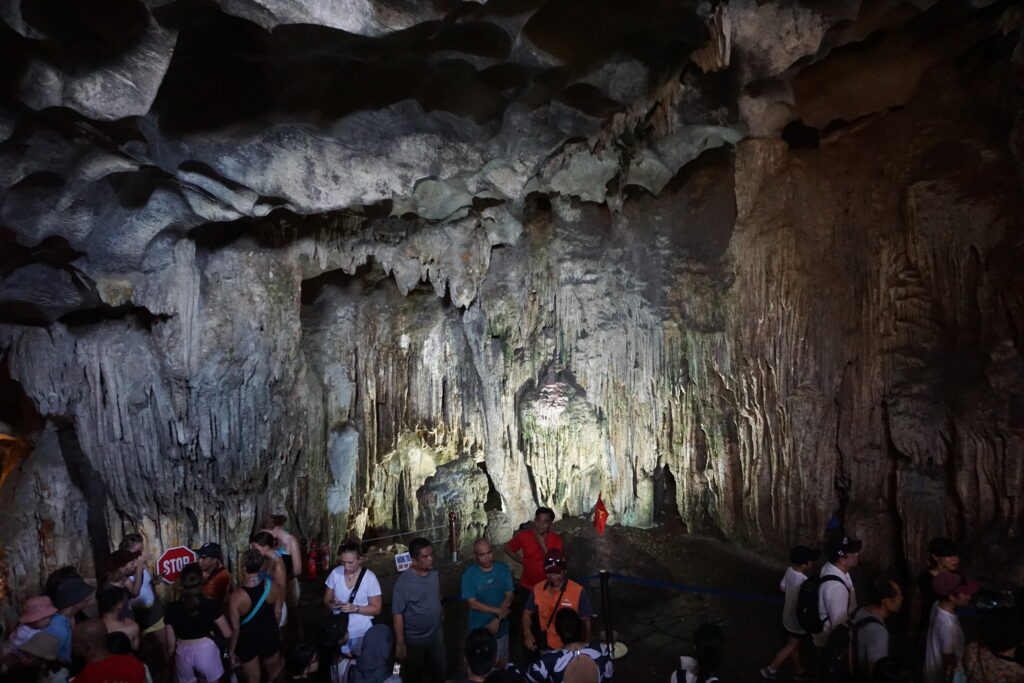
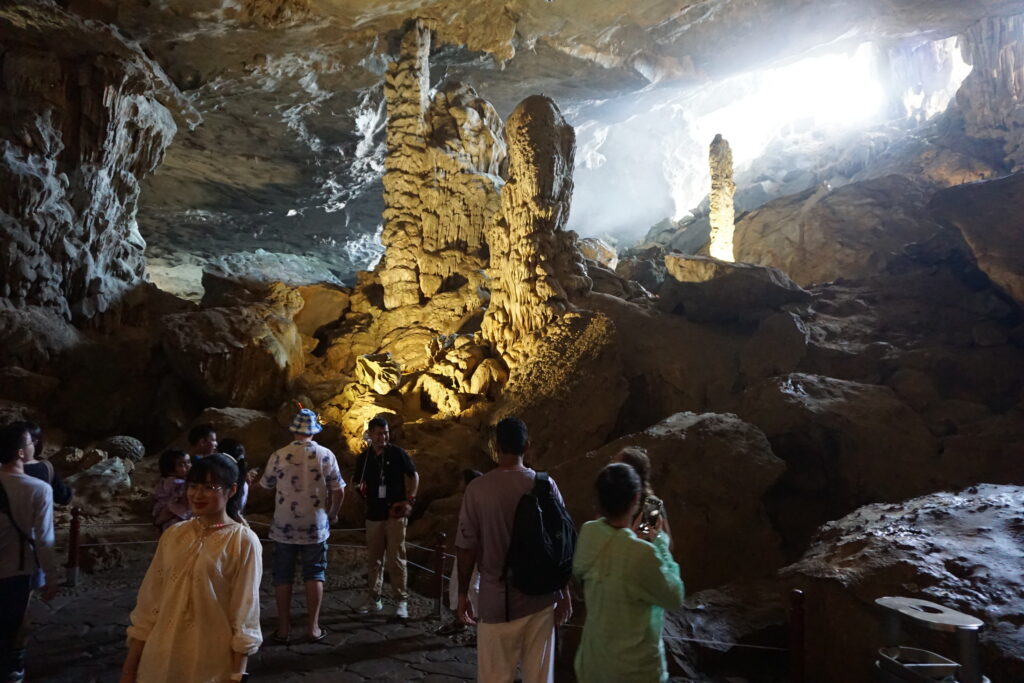
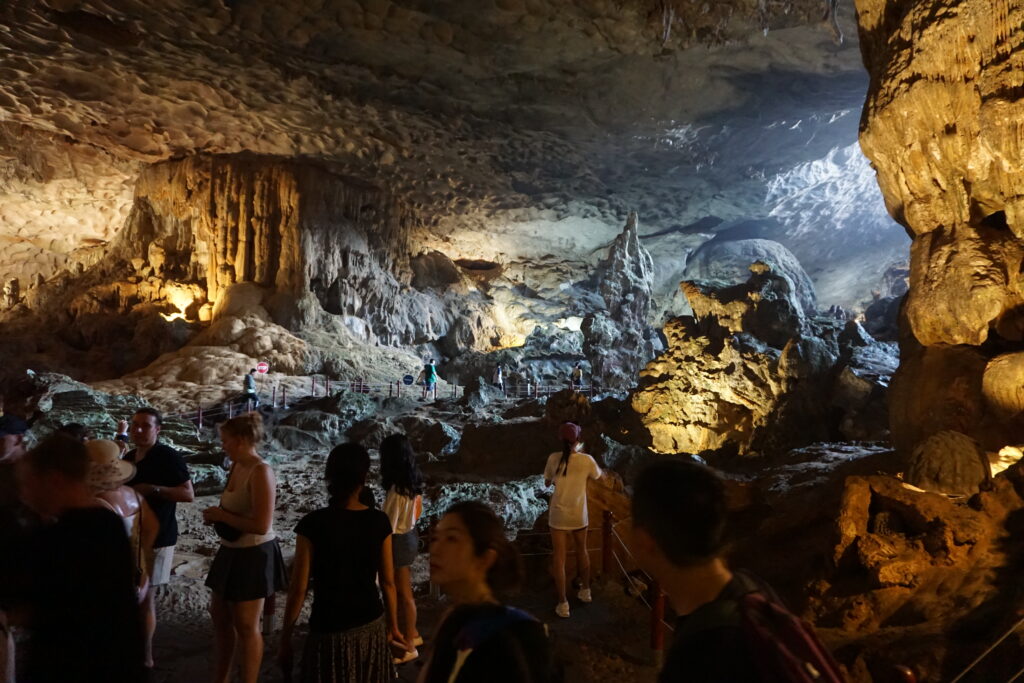
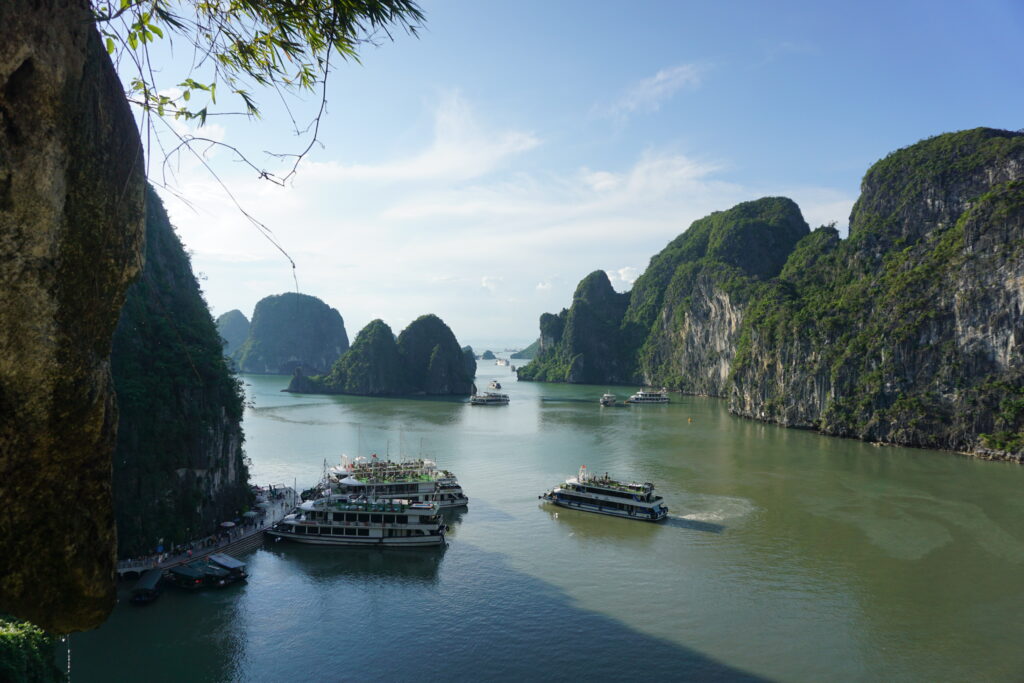
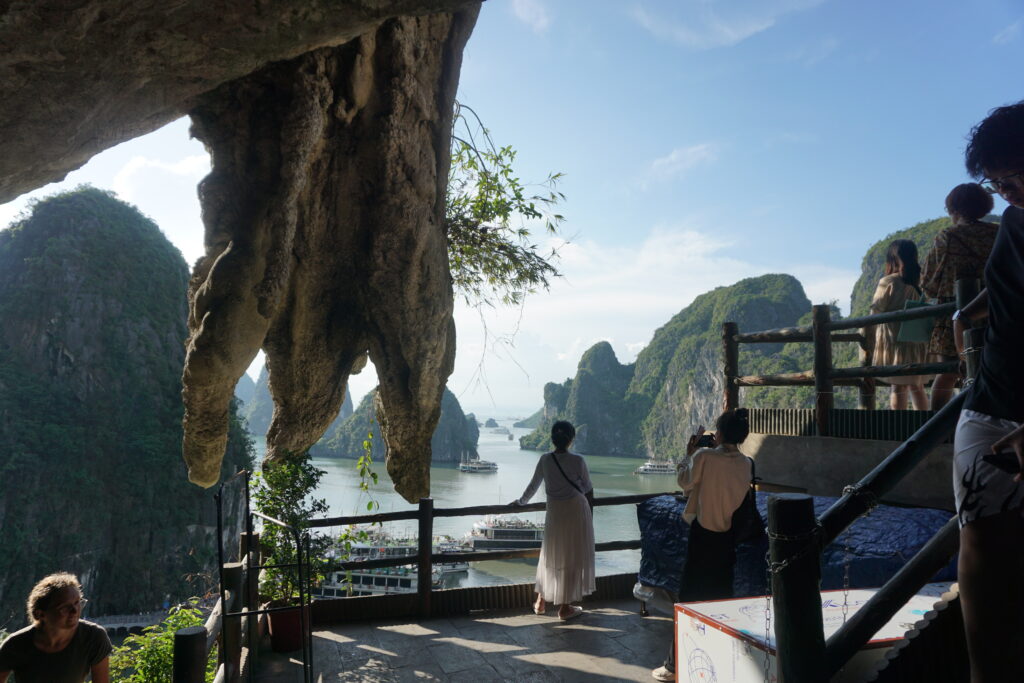
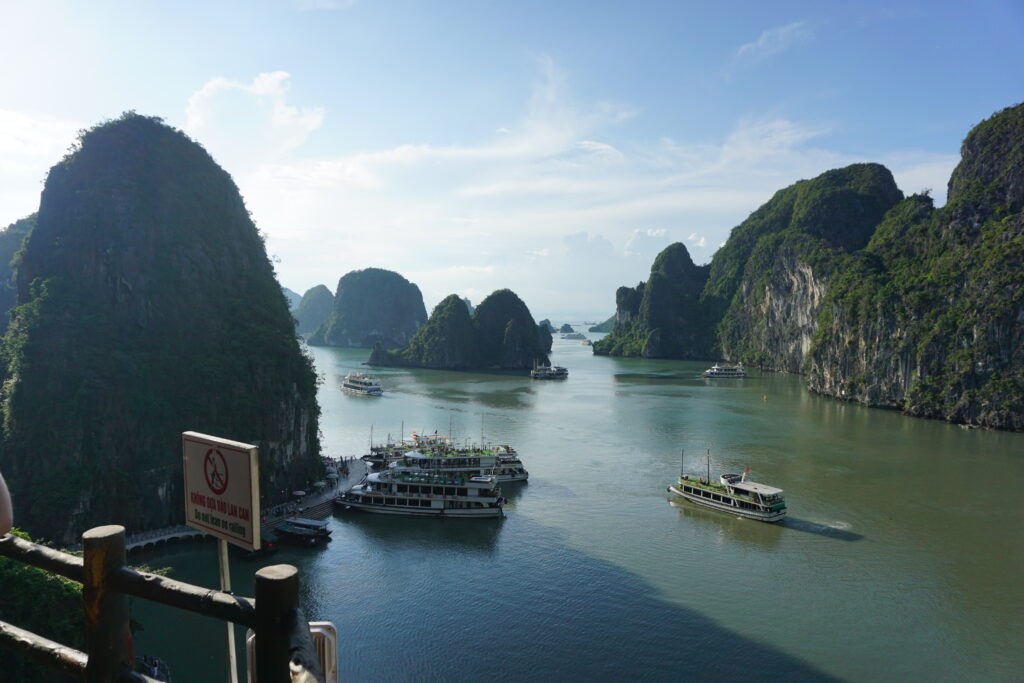
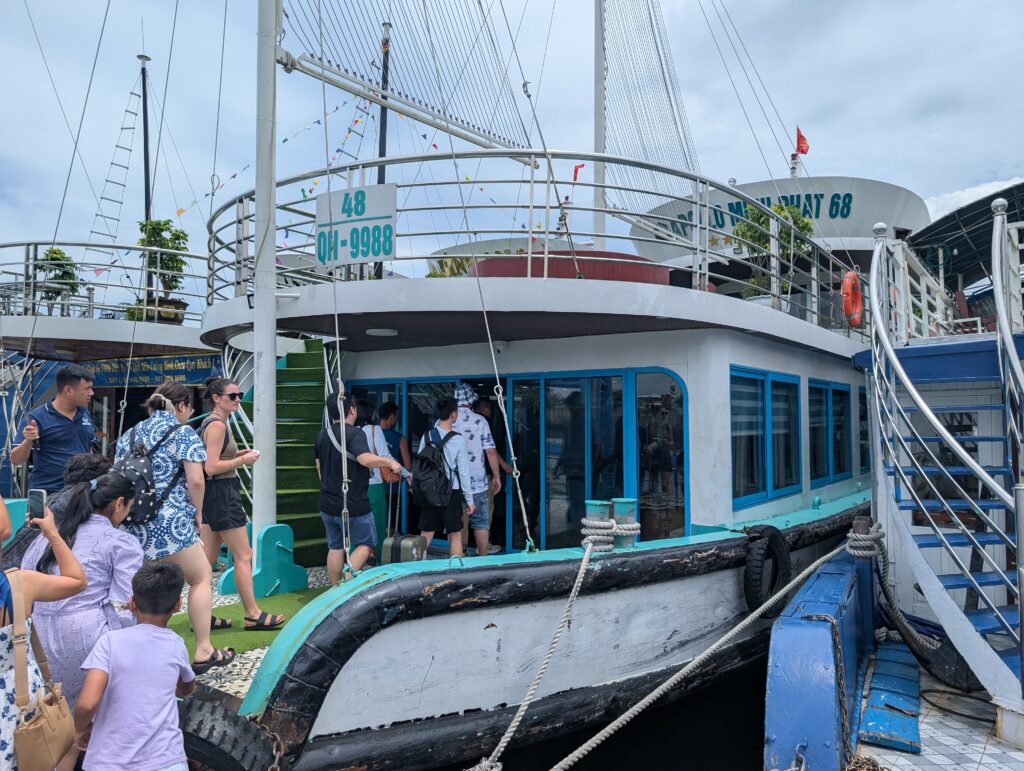
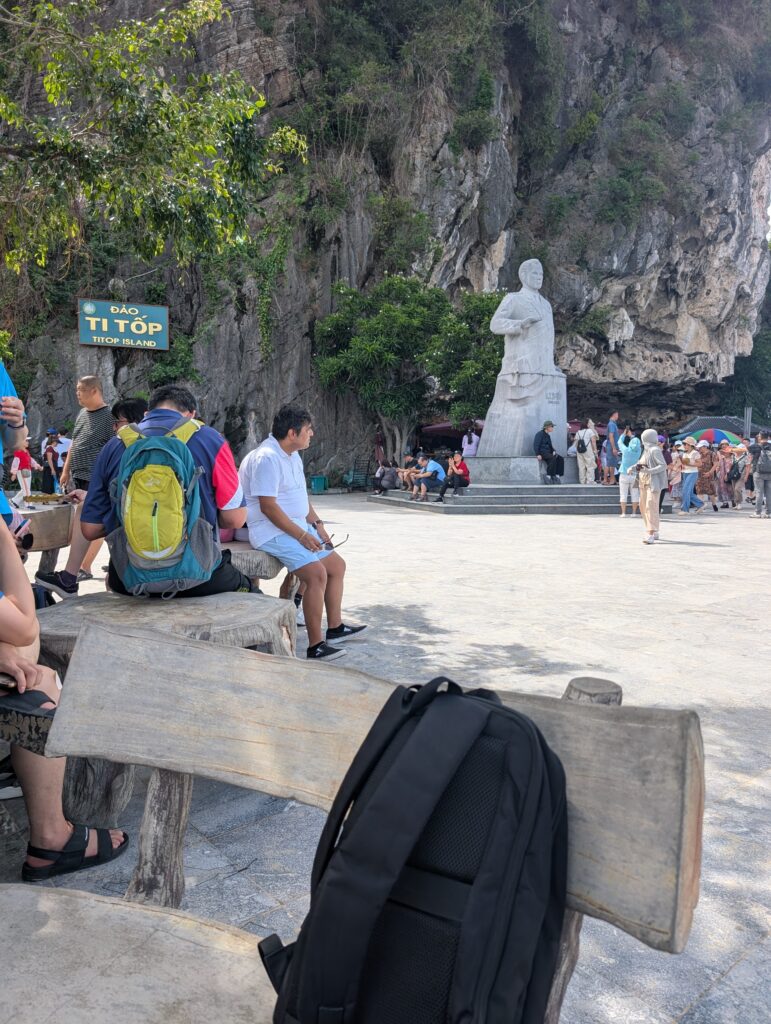
I decided I would not be an aggressive tourist on my 53rd birthday, July 5, 2025. I decided I would clean up most of the things I had not yet seen in Hanoi over the next few days. I would spend a good amount of time resting in the room, and getting ready for a few days of traditional touring in Saigon and a week and a half of traditional vacation with Stephanie and Caleb in Vietnam.
I hadn’t really spent time exploring Train Street the first day I saw it, so I walked up and down the tracks, looking at the shops and restaurants. The area was photo worthy, but it the eateries and shops were overpriced tourist traps. I enjoyed the walk as much as I could while being hectored by aggressive vendors and self-appointed tour guides. The tourist area of Train Street is fairly small however. I found both ends of it, and walked the tracks beyond.
After a long rest during the hottest part of the afternoon, I headed out to walk the night market. I didn’t find anything I couldn’t live without. I had been to plenty of night markets at this point. The streets were closed to wheeled traffic, and there was a live band near the lake. There wasn’t nearly enough seating, but I listened for a while. My friend Rudy joined me for a late dinner after her day trip. I tried nem cuon, which is a Vietnamese take on spring rolls. They are made from rice paper wrapping thin rice noodles, vegetables, pork, shrimp, etc. I had a main course as well. I was glad to have a friend to chat with over dinner.
I didn’t get out to run very early the next morning. The temperature was similar running in mid-morning, but it felt much hotter. I sat on a bench at the north end of the lake sweating for some time after I finished. As I sat there, a 9 year old boy named Bihn approached. He wanted to practice his English. He had learned most of his English from documentary type videos. He was well read, and had a solid base of knowledge (for a nine year old) on quite a few different topics. He told me what he knew about several rags-to-riches entrepreneurs, like Milton Hershey. I mentioned Henry Ford. He told me what he would do in case of a zombie apocalypse. We had a nice conversation until some local vendor with a board full of toy ducks came up and nearly sat on Bihn. He continued to crowd my young friend, and was visibly putting his weight on the kid after several more minutes has passed. I tried to point out to the vendor in English that he was sitting on a little boy. The vendor ignored the prompt after grumbling something back in Vietnamese. I poked the guy a little bit, kind of pushing him with a couple of fingers on the shoulder, attempting to get the bully to move.
This was the closest I ever came to having an altercation with anyone during the course of any of my travels. The vendor wheeled around and poured every English language epithet he could muster on me. He included several F-bombs, quite a few references to America and B-52s, advice to get the “F” out of Vietnam, complaints about my height, and several other interspersed expletives. Binh was visibly uncomfortable. I asked if he would like to just move to another nearby unoccupied place. He answered in the affirmative, and we walked over to the water’s edge and sat on the cement, hanging our feet off the edge, where we continued our conversation.
“Ho Chi Mihn always said you could choose peace whenever the other side allowed it,” Bihn commented. I took this as the highest compliment he could muster. I told him I really didn’t like bullies. He concurred, and we were better friends. He pulled out a partial deck of Uno cards and we began a game. We played by Binh’s not completely conventional rules. We were soon joined by a young Indian solo traveler in his very early 20s. The Indian wasn’t too sure of Binh’s rules, either, but we played by them and Binh won every hand, which was really the best result.
Eventually Binh’s mother, who had been shopping in the area returned and he went on his way. I returned to my room, showered off, and did some writing. It was a nice day. I eventually ventured back out and had a different variety of Xoi. It was great. I called it an early night, and prepared to head to the airport. I rose especially early so I could run one last time before collecting my things. I walked back down to the bus stop, and caught public transport to the Hanoi airport. The air quality was still terrible. I had not had time to go to the highlands, but it has been a nice visit in the North of Vietnam, and I was interested to see how the South differe
